
Article Summary: Virginia Landmarks
Virginia Landmarks. More Than Just Parks has 20 incredible must-see sites for you to visit.
There’s so much more to this exciting place than the Virginia Cavaliers. In this article, we’ll familiarize you with the incredible landmarks located in the Old Dominion.
We’ve got incredible places, iconic memorials, fascinating museums, epic monuments and so much more.
We’re going to give you our list of the Top 20 Landmarks In Virginia.
So, What Is A Landmark?
Well, it’s a place of “a special character or special historical or aesthetic interest or value as part of the development, heritage, or cultural characteristics of a city, state, or nation.”
Why visit these places? Because landmarks connect us to the past. Through visiting these wonderful places where history occurred we find our roots. It allows us to feel like we are a part of something much bigger than ourselves.
And, speaking of history, did I mention that I taught the subject? I spent a lifetime teaching about the history behind many of these amazing sites. Then I got to see them firsthand. And now I’m sharing the fascinating stories of these places with you. It doesn’t get any better than that!
So, without further ado, let’s dive in.
Table of Contents: Virginia Landmarks
Virginia Landmarks
Some Fascinating Facts About Virginia
Now here’s some fascinating facts about Virginia:
- First Permanent English Settlement: Virginia is known for being the site of the first permanent English settlement in North America. Jamestown, established in 1607, was the first successful English colony and played a crucial role in the early history of the United States.
- Historic Significance: Virginia has played a significant role in American history, being the birthplace of several prominent figures such as George Washington, Thomas Jefferson, James Madison, and James Monroe. It was also the capital of the Confederate States of America during the American Civil War.
- Natural Wonders: Virginia boasts a diverse and beautiful natural landscape. It is home to the Blue Ridge Mountains, part of the larger Appalachian Mountain range, which offers stunning vistas and opportunities for outdoor activities such as hiking, camping, and scenic drives. The state is also known for the picturesque Shenandoah Valley and the Chesapeake Bay, the largest estuary in the United States.
- Historic Sites: Virginia is filled with historic sites and landmarks. Mount Vernon, George Washington’s plantation home, is a popular destination for history enthusiasts. Colonial Williamsburg, a living history museum, recreates an 18th-century colonial town and offers a glimpse into America’s colonial past. Monticello, Thomas Jefferson’s architectural masterpiece, is another iconic attraction.
- Arlington National Cemetery: Located in Arlington, Virginia, just across the Potomac River from Washington, D.C., Arlington National Cemetery is a solemn and significant site. It serves as the final resting place for over 400,000 military service members, veterans, and their families, including the graves of President John F. Kennedy and the Tomb of the Unknown Soldier.
- Rich Cultural Heritage: Virginia is known for its vibrant arts and cultural scene. The state is home to numerous museums, theaters, and music venues. The Virginia Museum of Fine Arts in Richmond is renowned for its extensive collection of art spanning thousands of years.
- Thriving Wine Industry: Virginia has a growing reputation as a wine-producing region. It is home to over 280 wineries and is known for its production of excellent Viognier, Cabernet Franc, and Petit Verdot varietals. The scenic wine trails and vineyards of Virginia attract wine enthusiasts from around the country.
- NASA’s Langley Research Center: Located in Hampton, Virginia, the NASA Langley Research Center has played a vital role in the advancement of aerospace technology. It has been involved in numerous space exploration missions and has contributed to the development of groundbreaking technologies, including the Apollo lunar lander and the Mars rovers.
- The “Mother of Presidents”: Virginia earned the nickname “Mother of Presidents” because it is the birthplace of eight U.S. presidents—more than any other state. In addition to George Washington and Thomas Jefferson, other presidents from Virginia include James Madison, James Monroe, William Henry Harrison, John Tyler, Zachary Taylor, and Woodrow Wilson.
- Festivals and Events: Virginia hosts various annual festivals and events that showcase the state’s culture and heritage. The Virginia International Tattoo, a military music festival featuring performances from around the world, is held in Norfolk. The Shenandoah Apple Blossom Festival in Winchester celebrates the arrival of spring and is one of the oldest festivals in the United States.

Top 20 Virginia Landmarks
20. Luray Caverns
Virginia is known for the Appalachian Trail, oysters, Presidential homes, the Arlington National Cemetery, Dirty Dancing, Wild Ponies, Chesapeake Bay Bridge Tunnel, and the Brunswick Stew. Virginia is also famous for Shenandoah National Park and the numerous lakes it houses within its borders.
More Than Just Parks is giving you our list of the Top 20 Virginia Landmarks. And we’re kicking off our list at #20 with Luray Caverns.
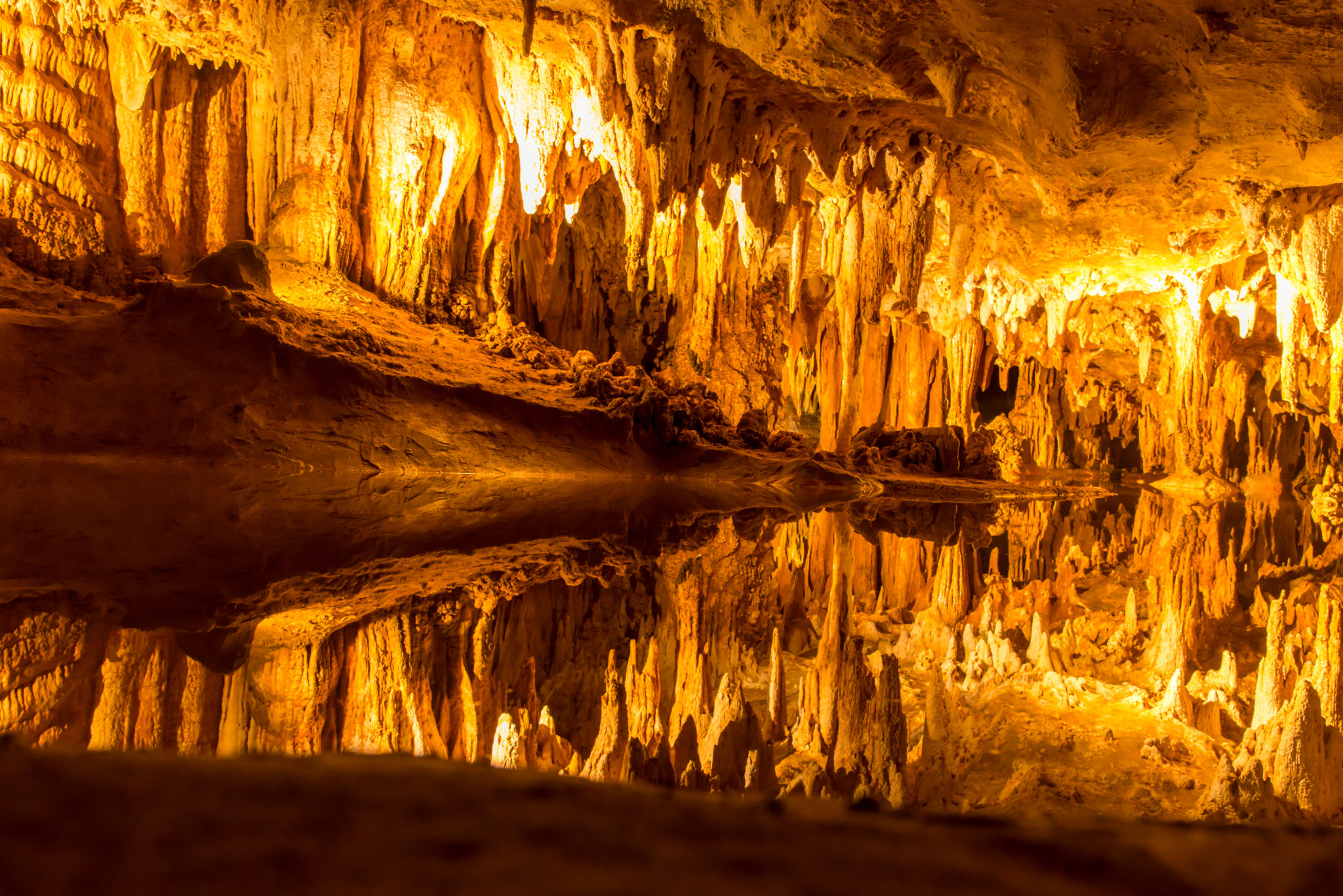
A Geologic Wonder
Luray Caverns is a stunning natural wonder, known for its intricate and beautiful formations of stalactites, stalagmites, columns, and flowstone. The caverns display a variety of unique formations, including the “Stalacpipe Organ,” a musical instrument that uses stalactites to produce musical tones.
It cover an expansive area, spanning over 64 acres. The caverns’ depth reaches approximately 140 feet, providing visitors with a vast underground landscape to explore.
The caverns house several cathedral-sized chambers, with soaring ceilings and massive formations. The most famous chamber, called the “Saracen’s Tent,” features a 47-foot tall column that is one of the tallest and most impressive formations found within the caverns.
Luray Caverns is home to an enchanting underground lake called “Dream Lake.” The lake’s still waters create a mirror-like reflection, giving the illusion of a surreal underground world. The formations on the lake’s edge appear to extend seamlessly into the water, creating a breathtaking sight.
One of the unique attractions of Luray Caverns is the Great Stalacpipe Organ, which uses rubber-tipped mallets to tap the stalactites in order to produce musical notes. This remarkable creation makes it the largest natural musical instrument in the world.
Historic Significance
Luray Caverns has a rich history that dates back to its discovery in 1878 by Andrew Campbell and William Campbell. The caverns were opened to the public in 1884 and have since become a popular tourist attraction, drawing visitors from around the world.
Luray Caverns is committed to preserving its natural beauty and heritage. The site has implemented various conservation measures to protect the delicate formations and maintain the caverns’ integrity. These efforts ensure that future generations can continue to appreciate this remarkable underground world.
In addition to the caverns, the Luray Caverns complex also houses the Luray Valley Museum. The museum provides visitors with insights into the history, culture, and geology of the region. It showcases exhibits that highlight the life and heritage of the Shenandoah Valley.
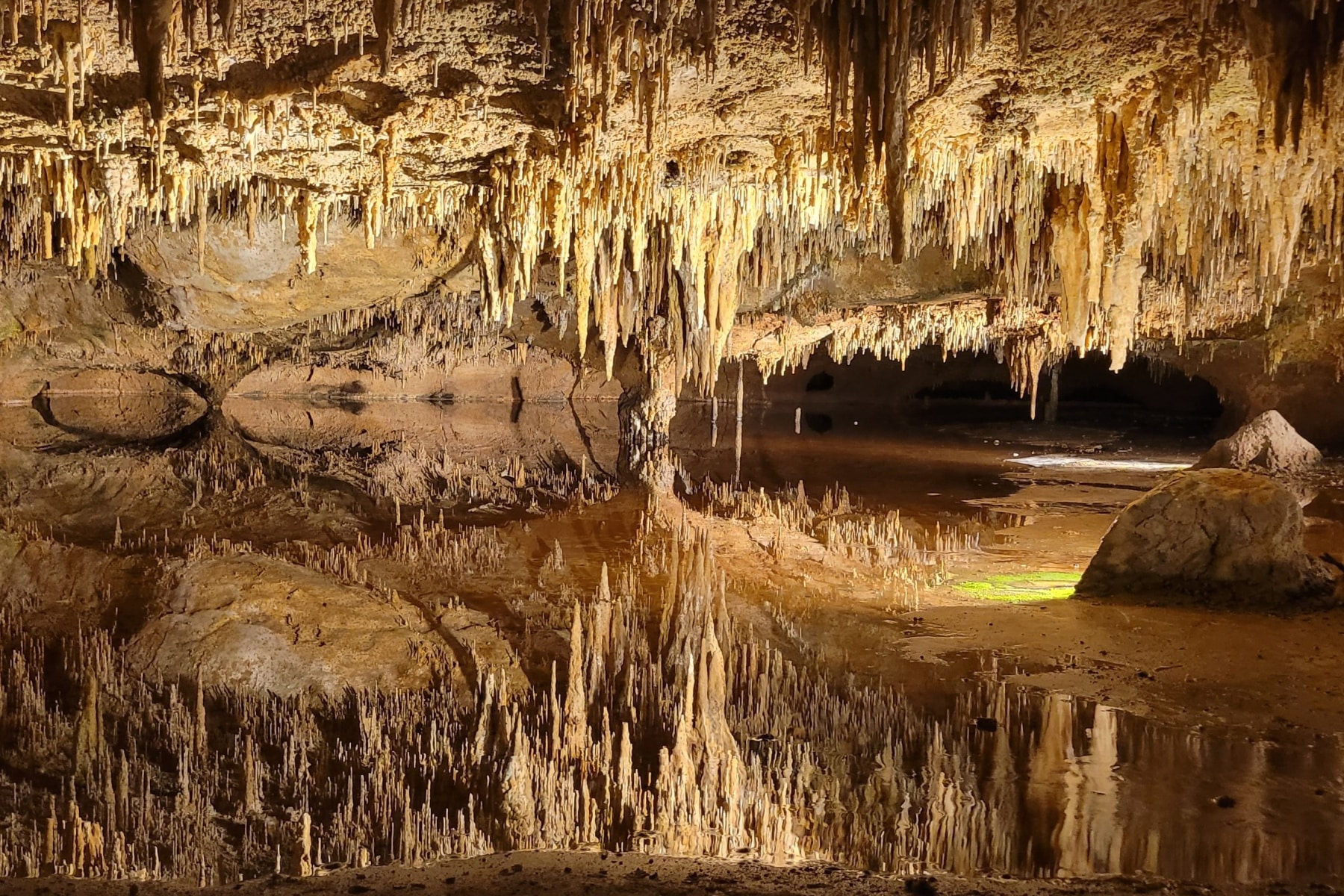
19. Chrysler Museum Of Art
Our next Virginia landmark has fifty galleries, a growing collection of more than 30,000 objects, an interactive space for families, and the only glass studio of its kind in the Mid-Atlantic region. Best of all, admission is free.
At #19 on our list of the Best Virginia Landmarks is the Chrysler Museum.

Chrysler Museum Of Art | Courtesy of Wikimedia Commons
A Short History
The Chrysler Museum was established in 1933 by automotive heir Walter P. Chrysler Jr. as the Norfolk Museum of Arts and Sciences. The museum underwent a major expansion and renovation in 2014, resulting in a stunning modern building designed by the award-winning architectural firm, Hartman-Cox Architects. The museum’s architecture seamlessly blends the historic and contemporary elements, creating a visually striking space.
The museum’s collection is diverse and encompasses a wide range of artistic mediums, including paintings, sculptures, glasswork, photography, and decorative arts. It features artworks from various periods and cultures, including ancient Egyptian, Greek, and Roman artifacts, European Renaissance and Baroque masterpieces, American paintings, modern and contemporary art, and a significant collection of glass art.
The Chrysler Museum has a notable collection of European and American art. Visitors can admire works by renowned artists such as Rembrandt, Francisco de Goya, Pierre-Auguste Renoir, Paul Gauguin, Georgia O’Keeffe, and Edward Hopper. The museum’s collection of American art spans from colonial times to contemporary works, showcasing the diversity and evolution of American artistic expression.
The Chrysler Museum is particularly renowned for its extensive collection of glass art. It has a dedicated Glass Studio, where visitors can witness live glassblowing demonstrations and engage with artists working in this medium. The museum’s glass collection includes pieces by world-renowned artists like Dale Chihuly, Harvey K. Littleton, and Lino Tagliapietra, showcasing the versatility and beauty of glass as an artistic medium.
Special Exhibitions & Programs
In addition to its permanent collection, the Chrysler Museum hosts a range of rotating special exhibitions that explore various themes, artistic movements, and cultures. The museum also offers educational programs, lectures, workshops, and community events to engage visitors of all ages and foster a deeper appreciation for the arts.
Adjacent to the Chrysler Museum is the Moses Myers House, a historic Federal-style home that is part of the museum complex. Built in 1792, it offers a glimpse into the life of a prosperous early 19th-century Jewish family in Norfolk. Visitors can explore the meticulously restored rooms and learn about the history of the Myers family and their contributions to the local community.

Washington at the Delaware (c1849) — by Edward Hicks (1780-1849) | Courtesy of Wikimedia Commons
18. Blue Ridge Mountains
Our next Virginia landmark is among the oldest in the world, second only to South Africa’s Barberton greenstone belt. At #18 on our list of the Best Virginia Landmarks is the Blue Ridge Mountains.
The Blue Ridge Mountains are part of the larger Appalachian Mountain Range, running primarily along the eastern coast of the United States. They stretch from Georgia and South Carolina in the south, through North Carolina, Virginia, Maryland, and into Pennsylvania in the north. The mountains are characterized by their distinct blue appearance, which is caused by the release of volatile organic compounds from the abundant vegetation.
They are celebrated for their stunning natural beauty. They are covered in lush forests that showcase a rich variety of flora and fauna. The dense canopy of trees, including oak, maple, and hickory, creates a vibrant tapestry of colors during the fall season. The area is also dotted with numerous waterfalls, streams, and rivers, adding to the scenic allure.
The Blue Ridge Mountains offer a paradise for outdoor enthusiasts. The region provides a wide range of recreational activities, including hiking, camping, fishing, bird-watching, and wildlife spotting. The famous Appalachian Trail, a long-distance hiking trail that spans over 2,000 miles from Georgia to Maine, traverses the Blue Ridge Mountains, attracting avid hikers from around the world.
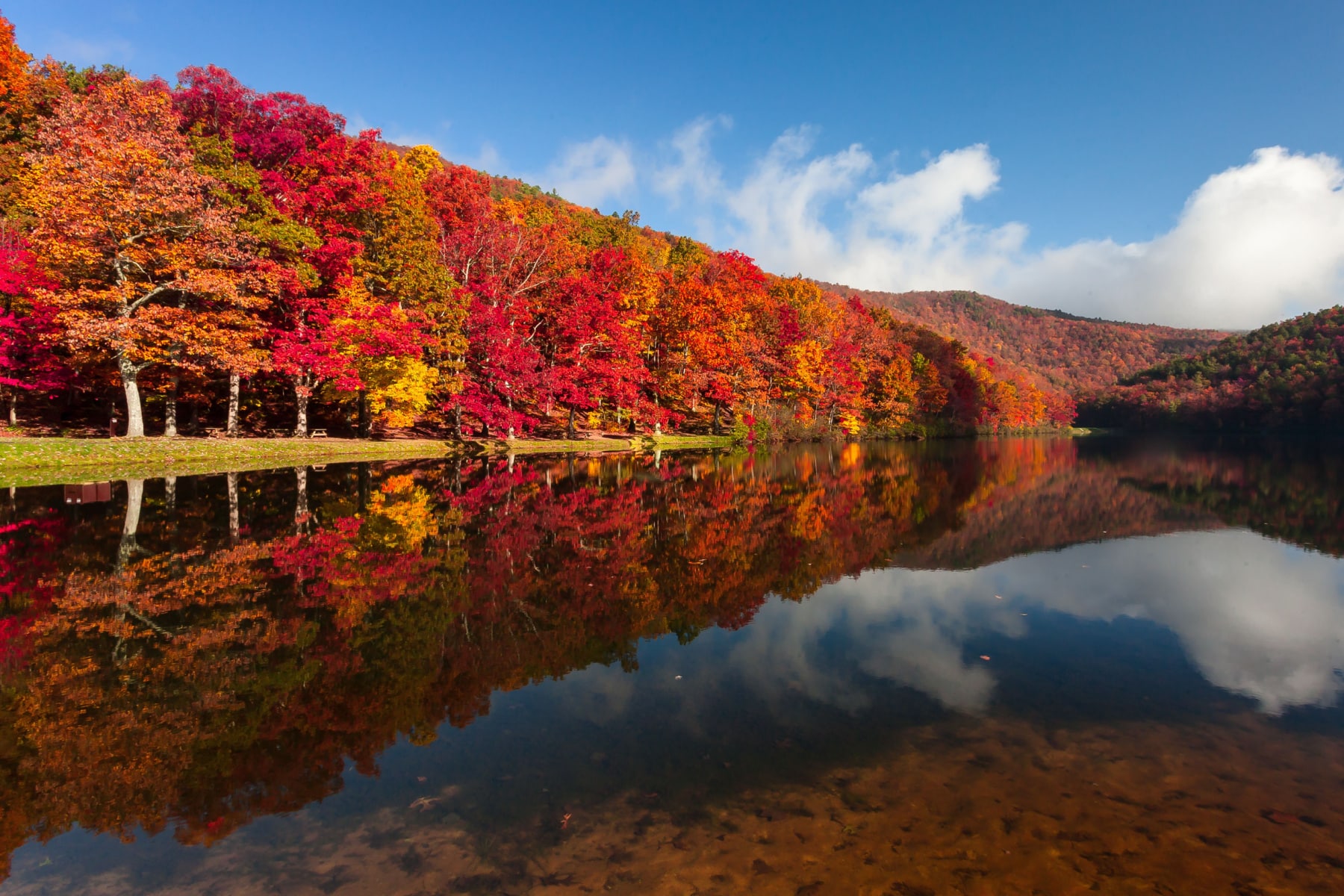
Music & Culture
The Blue Ridge Mountains have a rich cultural heritage, particularly in relation to traditional American folk music. The region is known for its contributions to bluegrass, country, and Appalachian folk music. The sound of banjos, fiddles, and storytelling reverberates through the mountains, reflecting the cultural traditions of the area.
These mountains are also home to a diverse array of plant and animal species. The region’s varied elevation and habitats support a remarkable range of wildlife, including black bears, white-tailed deer, bobcats, and a multitude of bird species. The forests teem with wildflowers and rare plants, making it a haven for nature lovers and botany enthusiasts.
The Blue Ridge Mountains offer an abundance of scenic drives and overlooks, providing breathtaking views of the surrounding landscapes. From the Blue Ridge Parkway, which winds through the mountain range, to overlooks such as Mabry Mill, Craggy Gardens, and Humpback Rocks, there are numerous opportunities to experience the awe-inspiring beauty of the mountains.
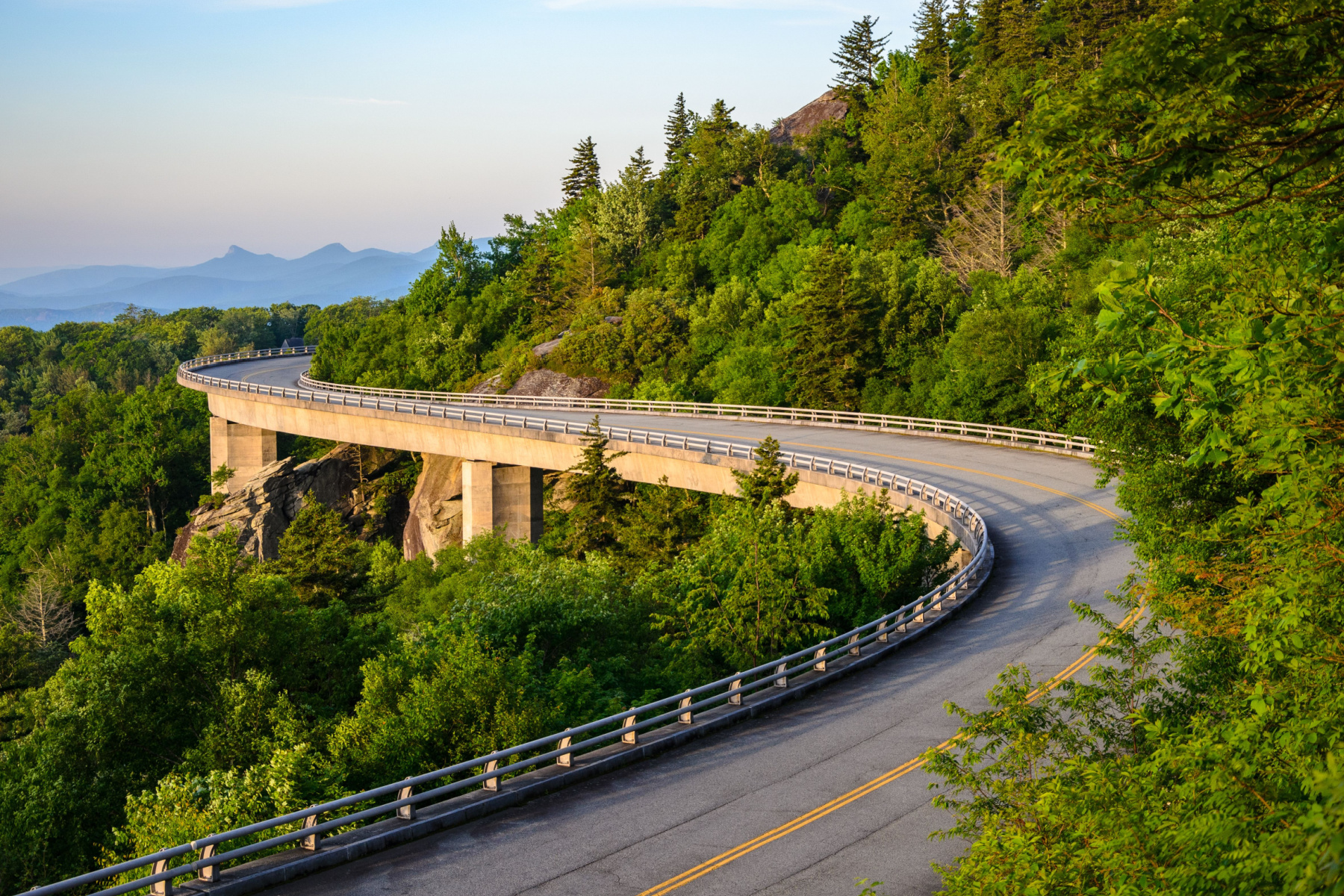
17. Jamestown Settlement
Our next Virginia landmark became the first permanent English settlement in North America. At #17 on our list of the Best Virginia Landmarks is Jamestown.
The Jamestown Settlement was the first permanent English settlement in North America, located in what is now the state of Virginia. Its history began in 1607, when a group of 104 English colonists, sponsored by the Virginia Company of London, arrived on the shores of the Chesapeake Bay.
The initial years of the settlement were difficult, with disease, famine, and conflict with Native American tribes taking a heavy toll on the colonists. Many of the original settlers died, and the settlement was on the verge of collapse.
In 1610, a new governor, Sir Thomas Gates, arrived in Jamestown with a fleet of supply ships, which saved the colony from starvation. He was followed by another governor, Sir Thomas Dale, who implemented strict laws and harsh punishments in order to maintain order and discipline among the colonists.
In 1619, the first representative assembly in the English colonies, known as the House of Burgesses, was established in Jamestown. This marked a significant step towards self-government and democracy in America.
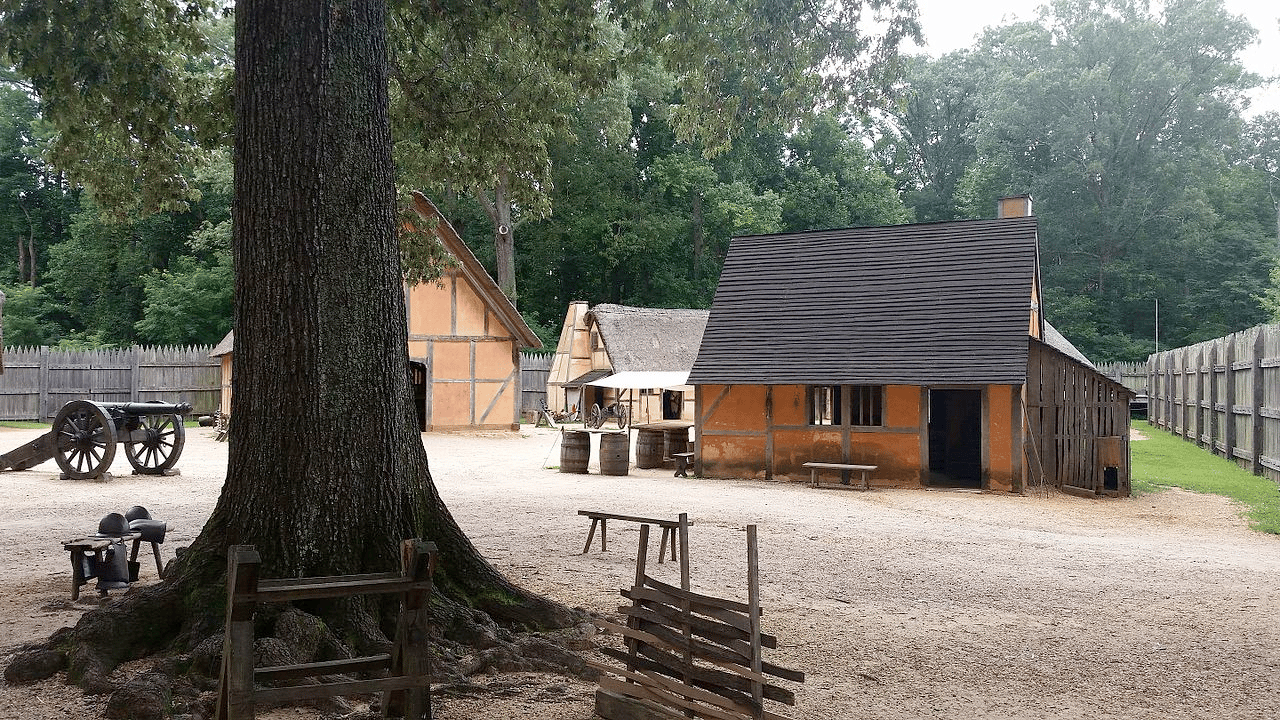
Things To Do At Jamestown
The Jamestown Settlement offers a range of activities and experiences for visitors of all ages. Here are some things to do at the Jamestown Settlement:
- Explore the Living History Museum: The museum features a reconstructed 17th-century fort, Powhatan Indian village, and replica ships that tell the story of the early English settlement in Virginia.
- Visit the Gallery Exhibits: The museum’s exhibits showcase artifacts and interactive displays that explore the history and culture of the Jamestown Settlement, including the arrival of the first English colonists, the impact of the transatlantic slave trade, and the relationship between the English and Native Americans.
- Watch Historical Interpretations: Throughout the day, visitors can watch historical interpreters in period costumes as they demonstrate daily life in the early settlement, including cooking, blacksmithing, and farming.
- Take Part in Educational Programs: The Jamestown Settlement offers a variety of educational programs for children and adults, including hands-on workshops, guided tours, and classroom resources.
- Visit the Archaearium: The Archaearium is an archaeological museum that showcases the artifacts and findings from the excavation of the original Jamestown settlement site.
- Enjoy Outdoor Activities: The museum also offers outdoor activities such as a nature trail, picnic areas, and a gift shop where visitors can purchase souvenirs and books about the history of the Jamestown Settlement.

16. Edgar Allen Poe Museum
We move from the origins of America to a site which honors one of its greatest literary figures. At #14 on our list of the Best Historic Sites In Virginia is the Edgar Allen Poe Museum.

Edgar Allen Poe
Edgar Allan Poe (1809-1849) was an American writer and poet who is widely regarded as a master of the macabre and horror genres. He is also known for his contributions to the development of the modern detective story and science fiction.
Poe was born in Boston, Massachusetts, and he had a difficult childhood marked by financial struggles and the death of his mother at a young age. He attended the University of Virginia, but he left after a year due to financial difficulties. He later joined the U.S. Army, where he served for two years before being discharged.
Poe’s writing career began in earnest in the 1830s, and he became known for his dark, atmospheric stories and poems that often dealt with themes of death, madness, and the supernatural. Some of his most famous works include “The Raven,” “The Fall of the House of Usher,” “The Tell-Tale Heart,” and “The Cask of Amontillado.”
In addition to his contributions to the horror and mystery genres, Poe is also credited with introducing new literary techniques, such as the unreliable narrator, to the field of literature. His works have been highly influential and have inspired countless writers and artists over the years.
Despite his literary success, Poe struggled with alcoholism and financial instability throughout his life, and he died in 1849 under mysterious circumstances. Today, he is widely regarded as one of America’s greatest writers and an important figure in the development of American literature.
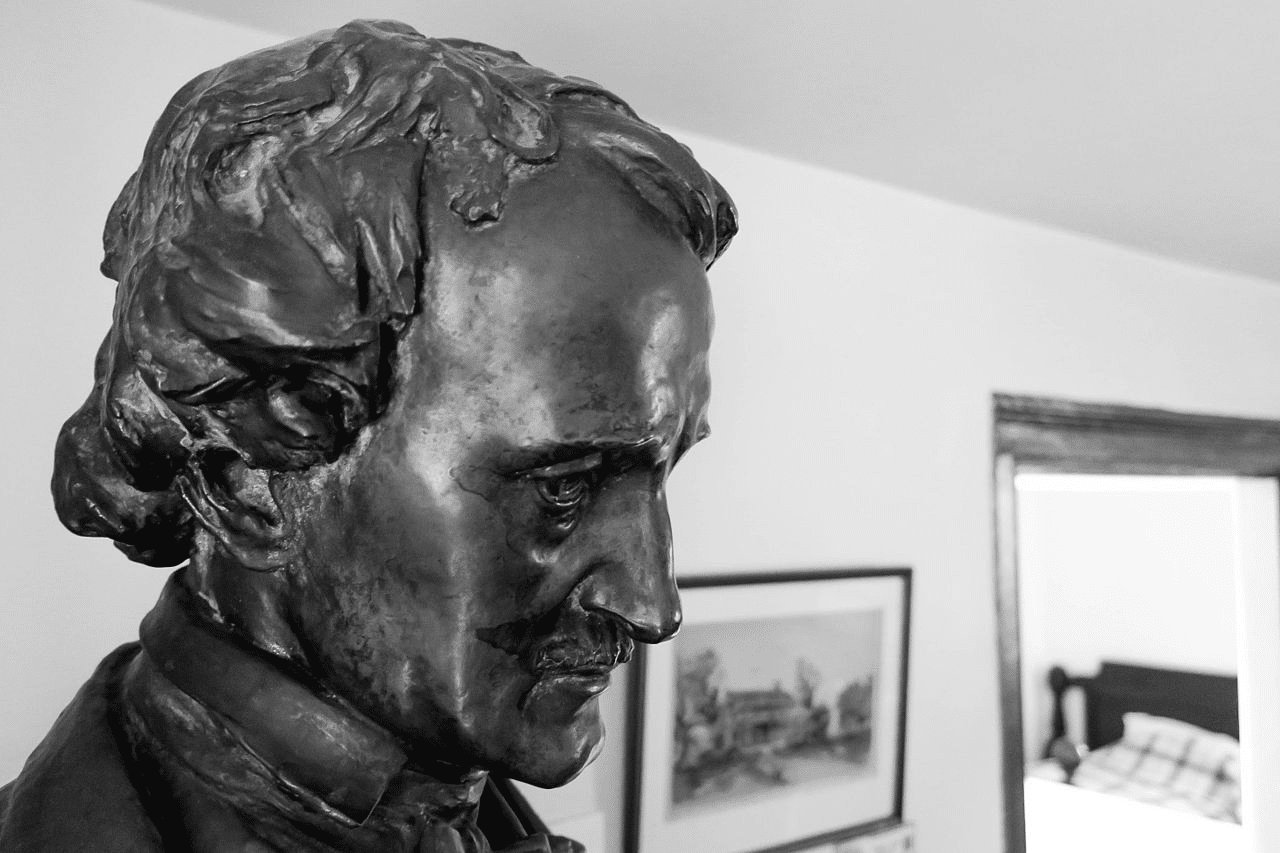
he Edgar Allen Poe Museum
The Edgar Allan Poe Museum is located in the Old Stone House, a building that was constructed in 1754 and is one of the oldest structures in Richmond.
The museum contains a wide range of artifacts related to Poe’s life and career, including manuscripts, letters, first editions, and personal belongings. The collection also includes memorabilia and artifacts related to Poe’s family and friends, as well as items related to the cultural and historical context of his life and work.
One of the highlights of the museum is the Enchanted Garden, a beautiful outdoor space that features plants and trees mentioned in Poe’s works, as well as a life-size statue of the author himself. The garden is a popular spot for visitors to relax and reflect on Poe’s literary legacy.
In addition to its exhibits and collections, the museum also hosts a range of events and educational programs throughout the year. These include readings, lectures, and workshops on topics related to Poe and his works, as well as special events for children and families.
Top 15 Virginia Landmarks
15. Virginia Museum of Fine Arts
We’re on to our Top 15. Our next Virginia landmark is considered among the largest art museums in North America for area of exhibition space. Its comprehensive art collection includes African art, American art, British sporting art, Fabergé, and Himalayan art.
At #15 on our list of the Best Virginia Landmarks is the Virginia Museum of Fine Arts.

Virginia Museum of Fine Arts | Courtesy of Wikimedia Commons
A Short History
The Virginia Museum of Fine Arts was established in 1936 and has since grown into one of the largest comprehensive art museums in the United States. The museum’s original building, designed in the Beaux-Arts architectural style, was expanded in 2010 with a striking modern addition designed by architect Rick Mather. The combination of classic and contemporary architecture creates a visually captivating space.
The VMFA boasts an extensive and diverse collection that spans over 6,000 years of art history. It encompasses a wide range of artistic mediums, including painting, sculpture, decorative arts, photography, and textiles. The collection features works from various cultures and periods, including ancient Egyptian, Greek, and Roman art, European Renaissance and Baroque masterpieces, American art, African art, Asian art, and contemporary works.
The museum’s European and American art collection is particularly noteworthy. It includes works by renowned artists such as Peter Paul Rubens, Claude Monet, Edgar Degas, John Singer Sargent, Mary Cassatt, and Jackson Pollock, among others. Visitors can explore the evolution of Western art and admire iconic paintings and sculptures from different movements and periods.
Special Collections
The VMFA is home to one of the most comprehensive collections of Fabergé in the United States. It features a stunning assemblage of Fabergé eggs, including the famous Imperial Easter Eggs created for the Russian royal family. These exquisite and intricately crafted objects highlight the artistry and craftsmanship of the renowned Russian jeweler.
The museum has a significant collection of African and African American art, showcasing the diversity and richness of these artistic traditions. The collection includes masks, sculptures, textiles, and contemporary artworks that reflect the cultural heritage and artistic expressions of African and African American communities.
The VMFA’s Asian art collection encompasses artworks from various countries, including China, Japan, Korea, and India. It features ancient ceramics, Buddhist sculptures, Japanese woodblock prints, and other significant examples of Asian artistry. The collection provides a comprehensive overview of the region’s artistic and cultural contributions.
Special Exhibitions & Programs
In addition to its permanent collection, the VMFA hosts a dynamic program of rotating special exhibitions that explore various themes, artists, and periods. These exhibitions often include loans from other museums and private collections, offering visitors a diverse range of artistic experiences. The museum also organizes educational programs, lectures, workshops, and performances to engage visitors of all ages.
The VMFA features a beautiful outdoor Sculpture Garden that provides a tranquil and artistic oasis for visitors. The garden showcases a collection of contemporary sculptures set amidst landscaped gardens and paths, inviting visitors to explore and appreciate art in a natural setting.

The main entrance to the 2010 McGlothlin wing of the Virginia Museum of Fine Arts, in Richmond, Virginia, United States of America, taken several months after completion. (Courtesy of Wikimedia Commons)
14. George Washington Birthplace National Monument
Our next Virginia landmark celebrates the man who not only served as the first president of the United States, but he also commanded the Continental Army during the American Revolution (1775–83) and presided over the convention that drafted the U.S. Constitution.
At #14 on our list of the Best Virginia Landmarks is the George Washington Birthplace National Monument.
First and foremost, George Washington’s birthplace is a place of history. It encompasses 550 acres of the former Popes Creek Plantation, the American ancestral home of the Washington Family where George Washington was born.
It includes the Memorial House Museum which gives its visitors the appearances of an 18th century plantation environment.
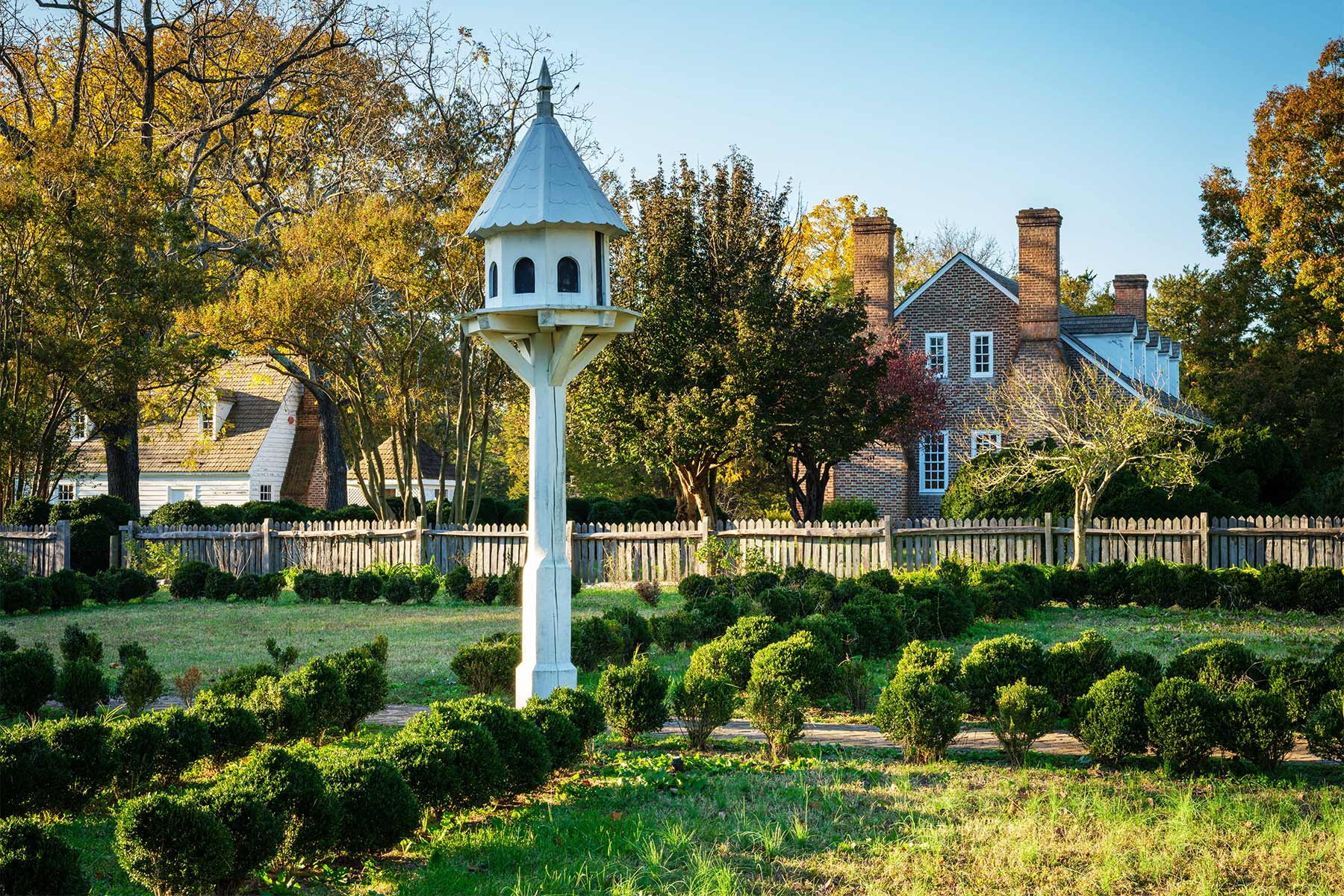
Outdoor Activities
Visitors can enjoy a hike along the Nature Trail or the Dancing Marsh Loop Trail at George Washington Birthplace National Monument. You will see different habitats that are home to a variety of plants and animals.
If you prefer biking to hiking then you’re in luck. Visitors can bicycle through George Washington Birthplace National Monument and enjoy nature’s tranquility in a historic setting while they’re doing it.
There’s even fishing too. The park allows fishing as a means of providing for public enjoyment and regulates it to ensure that it is managed in a manner that avoids unacceptable impacts to park resources.
13. Richmond National Battlefield Park
We turn our attention from the Revolutionary War/Founding Fathers to the bloodiest conflict in American history – the American Civil War. If there’s one event associated with Virginia it’s this one. At #13 on our list is Richmond National Battlefield Park.
Richmond, Virginia served as the capital of the Confederate States of America for almost the whole of the American Civil War. It was a vital source of weapons and supplies for the war effort, and the terminus of five railroads. The Union made many attempts to invade Richmond.
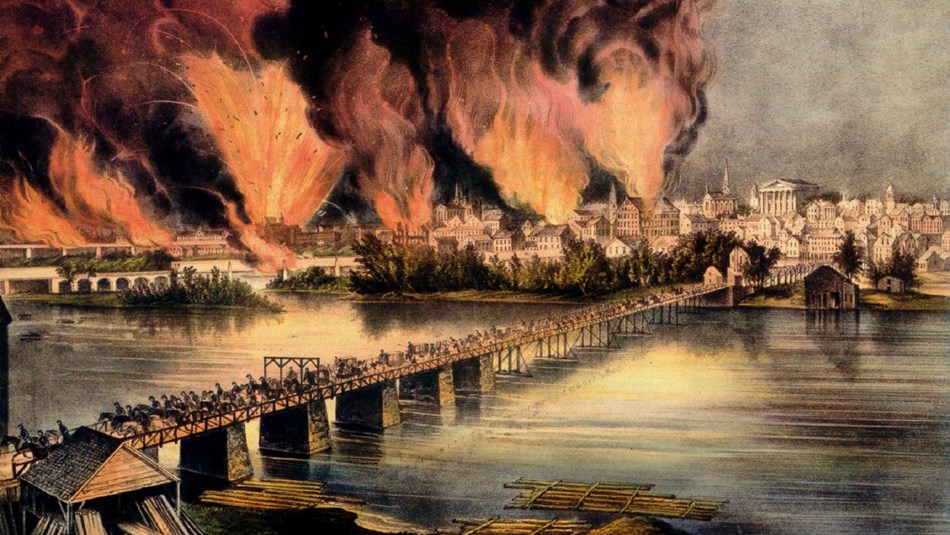
Things To See & Do
Three visitor centers offer a wide variety of exhibits and helpful information on how to maximize your experience at the Richmond National Battlefield Park. These include:
- Cold Harbor Battlefield Visitor Center: There are exhibits and artifacts on display. Electric map programs describe the 1862 Battle of Gaines’ Mill and the 1864 Battle of Cold Harbor. There’s also an excellent bookstore and Ranger programs offered daily during the summer season.
- Fort Harrison Visitor Center: Self-guided historical walking trail begins at the visitor center. Allow 20 minutes to complete the trail. The visitor center contains exhibits, a relief map of the fort, and a short film about the battle.
- Visitor Contact Station at Tredegar Iron Works: Check out the American Civil War Museum at the Iron Works. It’s well worth you time as even Civil War History buffs find out new things they didn’t know about America’s bloodiest conflict.
Other Things To Do
The park has several trails spread out among its 13 units that are ideal for hiking, running or walking your dog. These trails combine enjoyment of nature with sites of Civil War history.
Biking is permitted ONLY on the Totoptomoy Creek trail (as well as most park roads).
There are some excellent hiking trails at:
- Gaines Mill: The Gaines’ Mill battlefield has two connected loop trails where visitors can hike through historic hardwood forest overlooking Boatswain creek.
- Totopotomoy Creek: The Totopotomoy Creek battlefield has a 0.56 mile long loop trail that tours the fields and gardens around the Shelton House. Highlights include two pieces of Union-built entrenchments that survive along this trail and the family cemetery just in front of the entrenchments.
- Cold Harbor: The trails at Cold Harbor consist of three connected loops where visitors can wander through native forest, listening to the trickle of Bloody Run creek, and learn about the site’s Civil War history.
- Malvern Hill: The Malvern Hill Battlefield has two connected loop trails that are each 1.5 miles long. (Source: NPS)
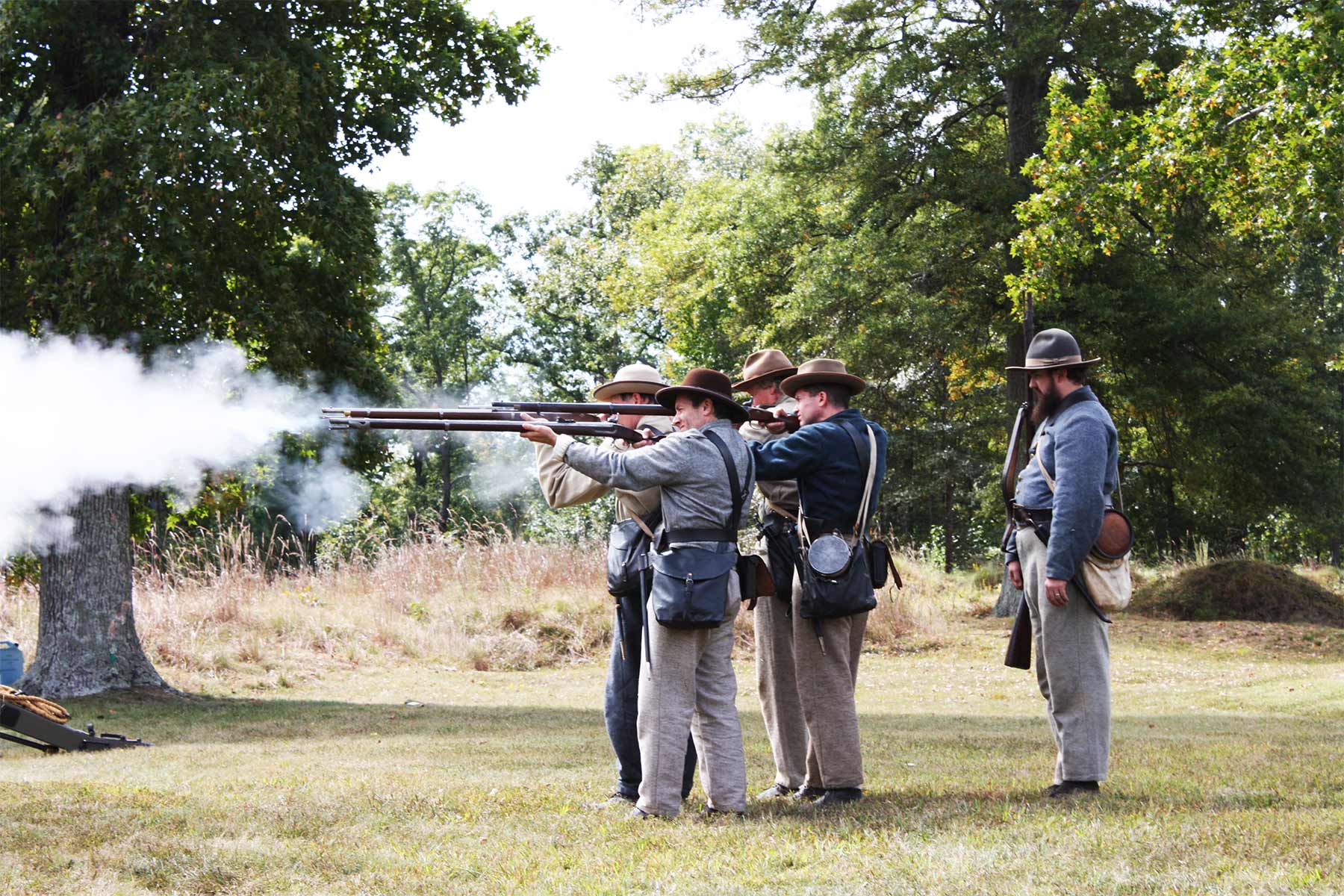
12. Fort Monroe National Monument
If you enjoy military history then you’ll love our next historic site. At #12 on our list of the Best Virginia Landmarks is Fort Monroe National Monument.
The story begins over 400 years ago. In 1607, the English explorer Captain John Smith came ashore near here. After surveying the area in 1608, he pronounced this place a “little isle fit for a castle.”
In 1609 colonial settlers built a wooden structure large enough to hold fifty men and seven mounted cannons, and called it Fort Algernourne.

It Was The Only Military Installation In The Upper South To Remain In U.S. Control During The Civil War
During the American Civil War, it was the only federal military installation in the Upper South to remain under United States control throughout the conflict.
The fort headquartered the Union Department of Virginia and North Carolina, and several significant military campaigns and combined operations were launched from the installation.
It served as the headquarters for Union General George McClellan during his Peninsula Campaign.
CHECK OUT: 10 BEST Civil War Sites In America

Fort Monroe Was A Proving Ground For One Of The South’s Greatest Generals
I am the first one to admit that I’m always learning and therefore I’m always appreciative when I receive feedback from the readers of my articles.
One of those readers pointed out to me that it was no one less than Robert E. Lee who, as a young and inexperienced graduate of West Point in 1831, began to prove his abilities at Fort Monroe.
In 1831, the job of finishing many features at Fort Monroe — including the moat, the outer moat wall, the north ramparts and the outer works — represented a formidable challenge. It would be Robert E. Lee who would rise to that challenge as a young officer looking to prove himself.
Lee designed buildings, wharves and outer fortifications in addition to supervising the completion of the immense Water Battery, whose stone and brick casemates mounted 42 seacoast guns in defense of the fort’s bayside walls.
As noted author and historian Douglass Southall Freeman writes in his masterful biography of Robert E. Lee, “In the better mastery of his profession, these years were a busy and a most important period with Lee. He came as an assistant of limited experience; he was to leave fully qualified to direct a large engineering project.”
Things To See & Do At Fort Monroe
It’s a beautiful 565-acre national monument which offers biking, boating, swimming and walking. Of course, it also offers history too. Inside the fort visitors will find the Casemate Museum.
This amazing museum tells the story of Fort Monroe from the construction of Fort Algernourne, the first defensive fortification at the site in 1609, through the last major command to be headquartered at Fort Monroe, the Army’s Training and Doctrine Command.
The museum features the room where Jefferson Davis was held briefly as prisoner following the American Civil War, highlights the 1861 “Contraband of War” decision that granted three enslaved men, and thousands who followed, sanctuary at Fort Monroe, earning it the nickname “Freedom’s Fortress.”

11. Monticello
Our next Virginia landmark celebrates the 3rd President of the United States who was also the author of the Declaration of Independence among other notable achievements. At #11 on our list of the Best Virginia Landmarks is Monticello.
Monticello is a historic plantation located in Charlottesville, Virginia, that was the home of Thomas Jefferson, one of the Founding Fathers of the United States and the third president of the country. The history of Monticello spans more than 200 years, and it is considered one of the most important and iconic sites of American history.
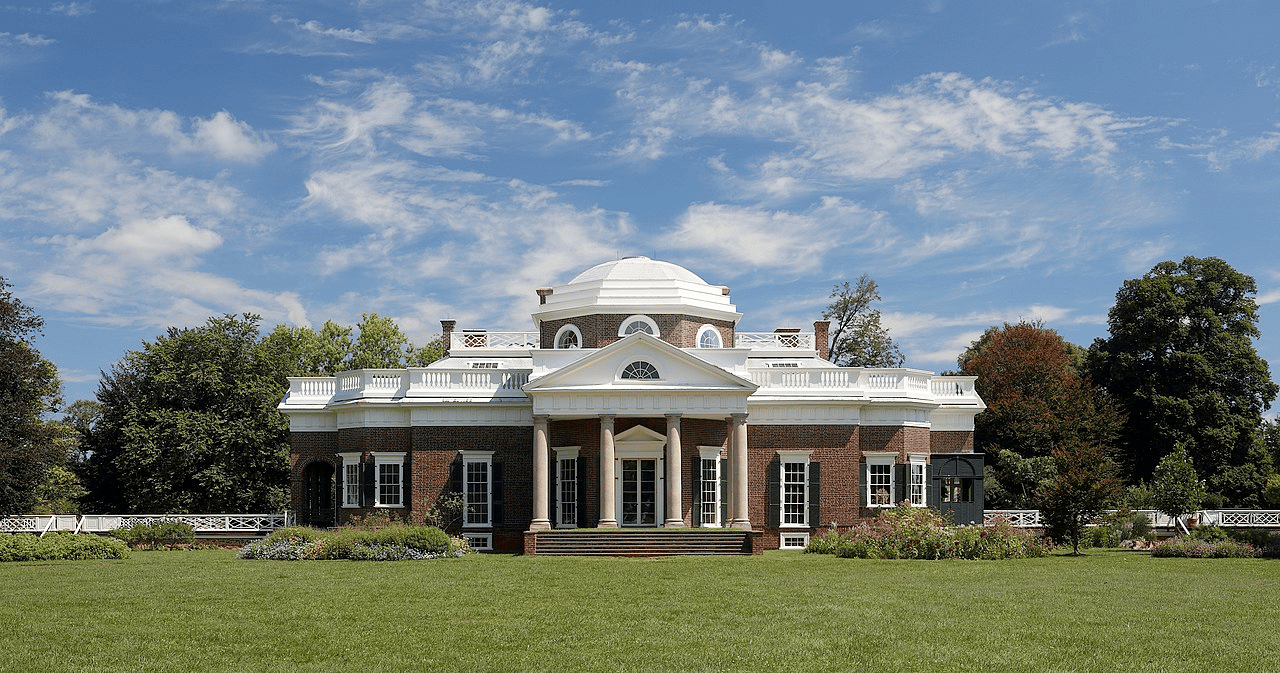
A Short History Of Monticello
Jefferson began construction on Monticello in 1768, when he was just 26 years old. He designed the house himself, drawing inspiration from the classical architecture of ancient Rome and Greece. Construction on the house continued for many years, and Jefferson made numerous changes and additions to the design over the course of his life.
Monticello served as Jefferson’s primary residence for much of his adult life, and it was here that he wrote the Declaration of Independence and many of his other important works. The plantation was also a working farm, with crops including tobacco, wheat, and corn, and it was home to a large number of enslaved people, who performed much of the labor on the estate.
Following Jefferson’s death in 1826, Monticello fell into disrepair and was eventually sold to pay off debts owed by his family. The property changed hands several times over the years, and at one point it was used as a hotel.
In 1923, the Thomas Jefferson Foundation purchased Monticello with the goal of restoring the property to its original condition and preserving it as a national treasure.
Things To Do At Monticello
There are many things to do at Monticello, including:
- Tour the House: Visitors can tour the historic house and see the rooms where Thomas Jefferson lived, including his study, bedroom, and library. There are guided tours and self-guided audio tours available.
- Visit the Gardens: Monticello’s gardens are famous for their beauty and historical significance. The gardens include a flower garden, vegetable garden, and orchard, and they are open for visitors to explore.
- Explore the Grounds: Monticello’s grounds include a number of outbuildings, including the slave quarters, kitchen, and smokehouse. Visitors can explore these buildings and learn about the daily life of those who lived and worked at Monticello.
- Attend Special Events: Monticello hosts a number of special events throughout the year, including concerts, lectures, and workshops. These events offer visitors a chance to learn more about Jefferson, his legacy, and the history of Monticello.
- Visit the Museum and Visitor Center: The museum and visitor center at Monticello offer a wealth of information about Jefferson’s life and the history of Monticello. The exhibits include artifacts, multimedia presentations, and interactive displays.
- Go on a Hike: Monticello’s grounds include several hiking trails that offer stunning views of the surrounding landscape. The trails range from easy to moderate and offer visitors a chance to experience the natural beauty of the area.
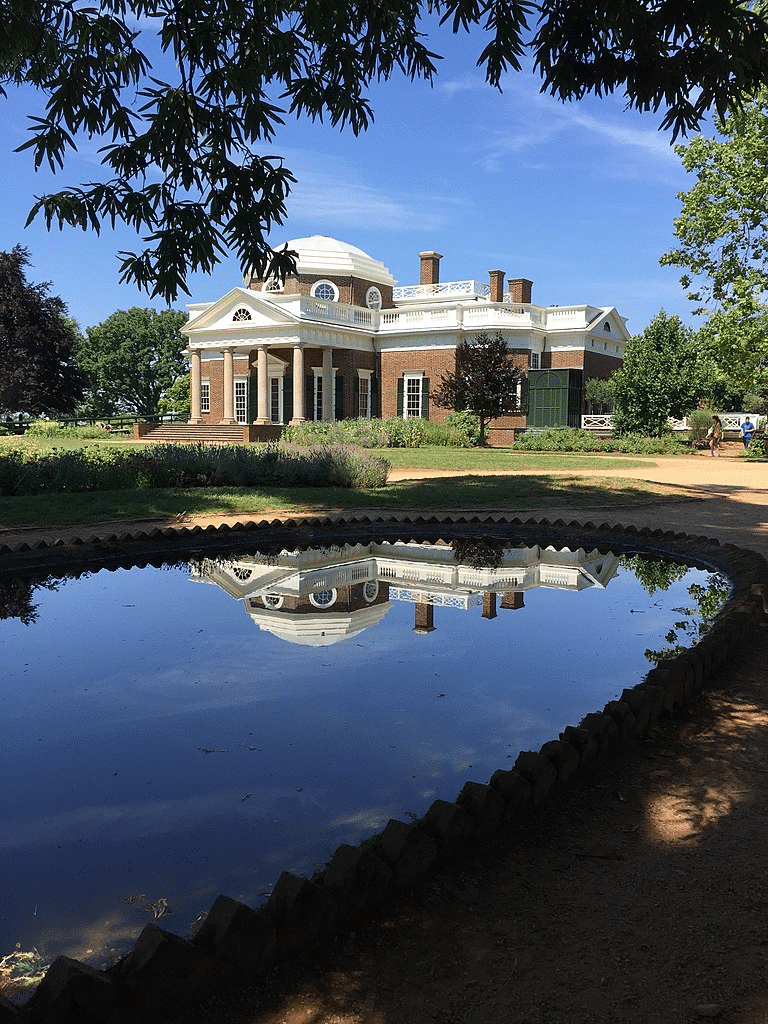
Top 10 Virginia Landmarks
10. Appomattox Court House
We’re on to our Top 10 Virginia landmarks. At #10 is the place where the bloodiest conflict in American history finally came to its conclusion.
On April 9, 1865, the surrender of the Army of Northern Virginia in the McLean House in the village of Appomattox Court House, Virginia, signaled the end of the nation’s largest war.
Two important questions about its future were answered. Could the nation survive a civil war intact? And would that nation exist without slavery? Thankfully, the answer to both of these questions was yes and America experienced a new birth of freedom.
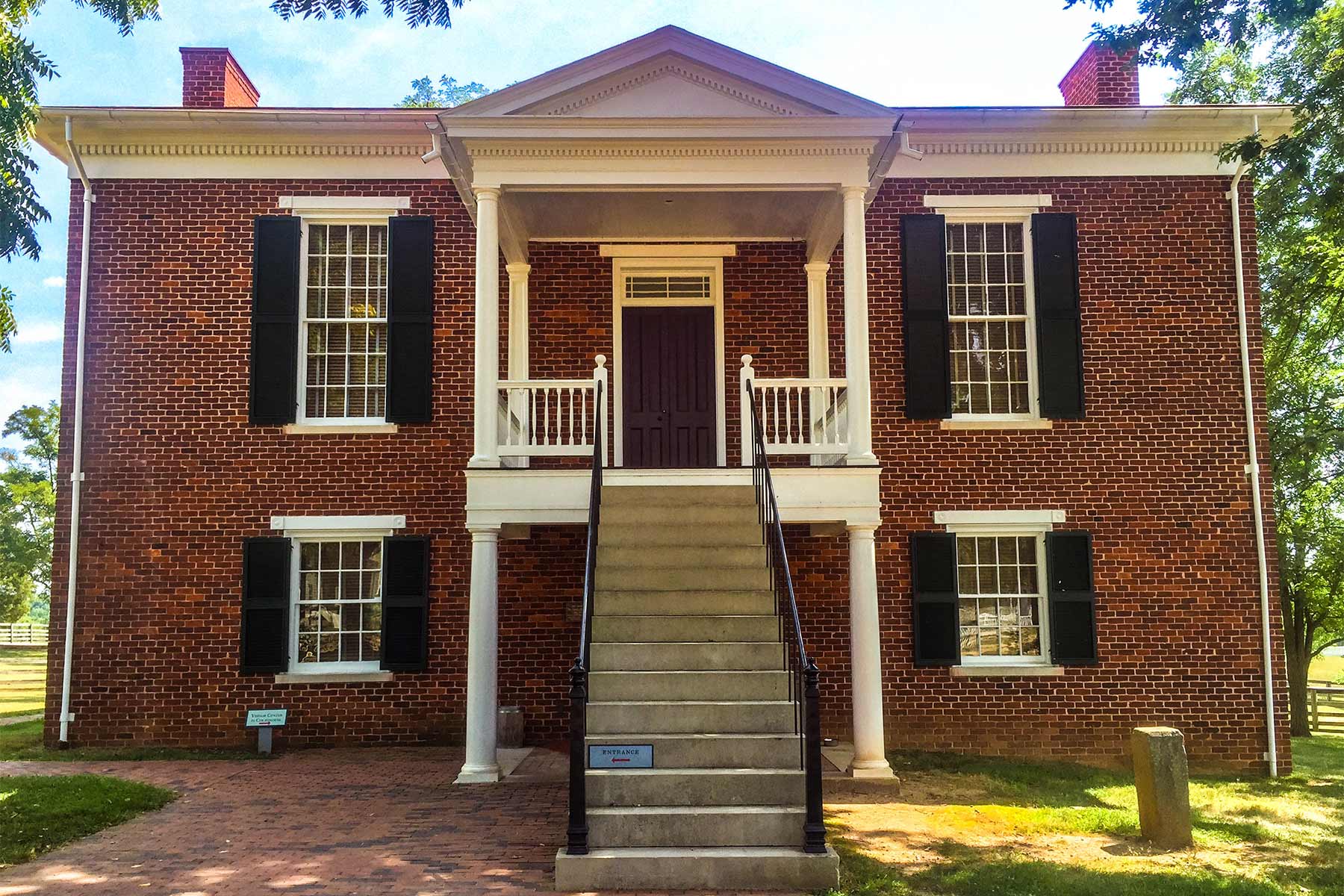
Things To Do
Here are some things you can do while visiting:
- Visit the Visitor Center: The visitor center provides information on the park, its history, and the events that took place here. You can watch a 20-minute film that explains the events leading up to the surrender of the Confederate Army of Northern Virginia to the Union Army of the Potomac.
- Take a guided tour: A guided tour is a great way to learn more about the park’s history and the events that took place here. Rangers lead tours of the historic village and the McLean House, where the surrender was signed.
- Explore the historic village: The historic village includes several restored buildings that date back to the Civil War era. You can visit the courthouse, the tavern, the blacksmith shop, and the jail.
- Visit the McLean House: The McLean House is where General Robert E. Lee surrendered to General Ulysses S. Grant on April 9, 1865. You can tour the house and see where the surrender took place.
- Walk the battlefield trail: The park has several walking trails that allow you to explore the battlefield and learn about the events that took place here.
- Attend special events: The park hosts special events throughout the year, including living history demonstrations, reenactments, and lectures.

9. Petersburg National Battlefield
If you’ve noticed a pattern then keep in mind that the key to a Union victory in America’s bloodiest battlefield was to defeat Robert E. Lee’s Army of Northern Virginia and the road to that victory led through Virginia.
For Union General Ulysses S. Grant this meant going through Petersburg. And this site is #9 on our list of the Best Virginia Landmarks.
In June 1864, in a brilliant tactical maneuver, Ulysses S. Grant marched his army around the Army of Northern Virginia, crossed the James River unopposed, and advanced his forces to Petersburg.
Knowing that the fall of Petersburg would mean the fall of Richmond, Robert E. Lee swiftly brought his forces to Petersburg doing so just in time to blunt Grant’s offensive.
The Battle of Petersburg was, in reality, the Siege of Petersburg. Given the defenders strong position despite Grant’s superior numbers, his army dug trenches and began a prolonged siege.
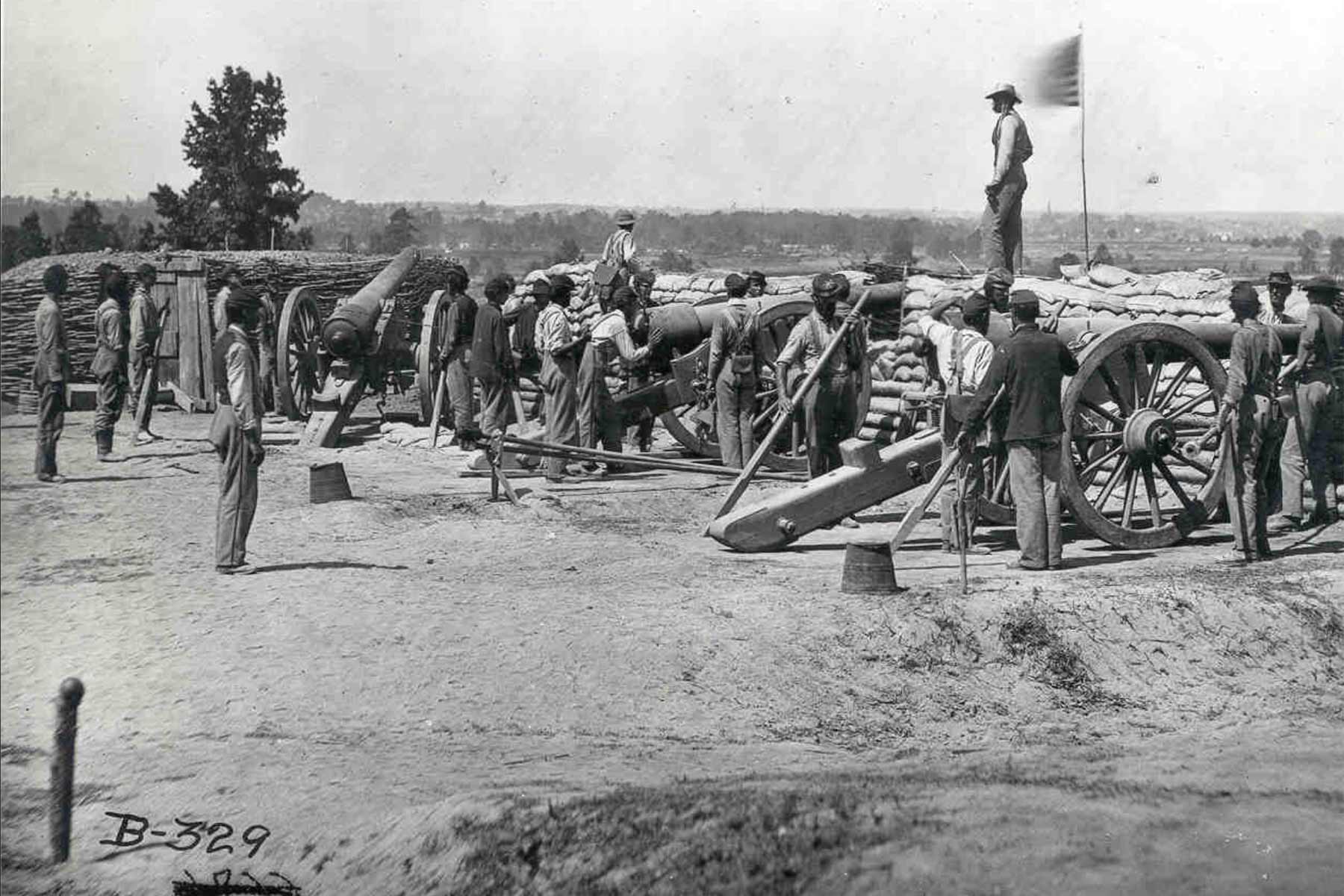
Things To Do At Petersburg
Here are some things you can do at the Petersburg National Battlefield:
- Take a self-guided driving tour: The battlefield has a 9-mile self-guided driving tour that takes visitors through the main sites of the Siege of Petersburg.
- Visit the Eastern Front Visitor Center: The visitor center has exhibits and a short film about the Siege of Petersburg, as well as information about the park’s programs and services.
- Take a guided tour: The park offers ranger-led tours of the battlefield and the historic city of Petersburg. Check with the visitor center for tour schedules and availability.
- Hike the trails: The park has several hiking trails that allow visitors to explore the battlefield and the surrounding woods and fields.
- Attend special events: The park hosts special events throughout the year, including living history demonstrations, ranger talks, and reenactments.
- Visit the museums: The park has two museums, the Petersburg National Battlefield Museum and the City Point Museum, which showcase artifacts and exhibits related to the Siege of Petersburg and the history of the region.
- Picnic: The park has several picnic areas where visitors can enjoy a meal surrounded by the beauty and history of the battlefield.
- Bird watching: The park has a variety of habitats, including forests, fields, and wetlands, which provide opportunities for birdwatching.
- Fishing: The park has several ponds and streams that are open to fishing. Check with the park for fishing regulations and permits.

CHECK OUT: 10 BEST Civil War Sites
8. Harpers Ferry National Historical Park
We’re only just getting started when it comes to Virginia and the Civil War. So many amazing sites. So little time. At #6 on our list of the Best Historic Sites In Virginia is the place where the fuse of rebellion was lit. It’s Harpers Ferry National Historical Park.
Here are some of the reasons why Harpers Ferry is an important national historical park:
- John Brown’s Raid: In 1859, abolitionist John Brown led a raid on the federal armory at Harpers Ferry, hoping to start a slave rebellion. The raid failed, but it became a turning point in the nation’s approach to slavery and helped spark the Civil War.
- Industrial Revolution: Harpers Ferry was an important center of industry in the mid-19th century, producing rifles and other weapons for the U.S. government. The town’s location at the confluence of the Potomac and Shenandoah rivers made it a strategic transportation hub, and it was an important stop on the Chesapeake and Ohio Canal.
- Civil War: Harpers Ferry was a key site during the Civil War, changing hands several times between Union and Confederate forces. The town was a major transportation and supply center for Union troops, and its capture by Confederate forces in 1862 was a major setback for the Union.
- African American History: Harpers Ferry was also an important site in African American history. The town was a stop on the Underground Railroad, and many African Americans worked in the armory and other industries in the area.
- Natural Beauty: In addition to its historical significance, Harpers Ferry National Historical Park is known for its stunning natural beauty. The park is located at the confluence of the Potomac and Shenandoah rivers, and it offers opportunities for hiking, fishing, and other outdoor activities.
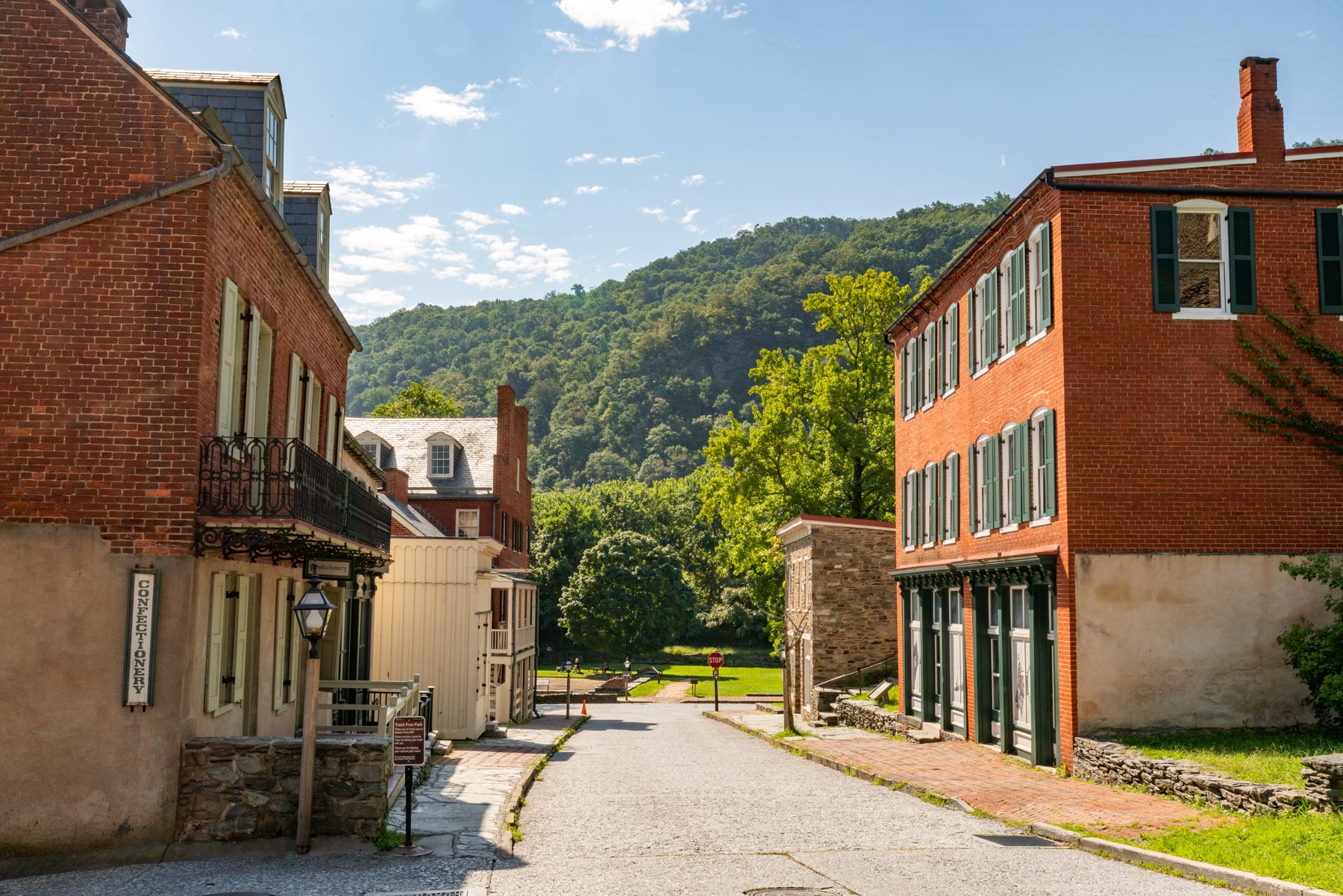
Harpers Ferry | Virginia Landmarks
Things To Do At Harpers Ferry
History truly comes to life at Harpers Ferry. There visitors can explore museums and exhibits, hike to overlooks or along Civil War skirmish lines, join a ranger-guided tour or sign-up for a living history workshop.
I recommend beginning your visit at the visitors center where you can pick up helpful information. Rangers are available to answer your questions.
Before heading out to explore the town and its surrounding natural beauty, as a history buff I recommend a stop at the Harpers Ferry Park Association’s Bookshop. It has a wonderful collection of books on the Civil War.
If you’re looking to combine history and nature then check out the 22 miles of hiking trails at Harpers Ferry. It happens to be the mid-point of the 2,178-mile Appalachian Trail.
Picnicking is also available at Harpers Ferry National Historical Park at a designated picnic area adjacent to the Visitor Center parking lot. Picnic tables are on a first-come, first-serve basis.
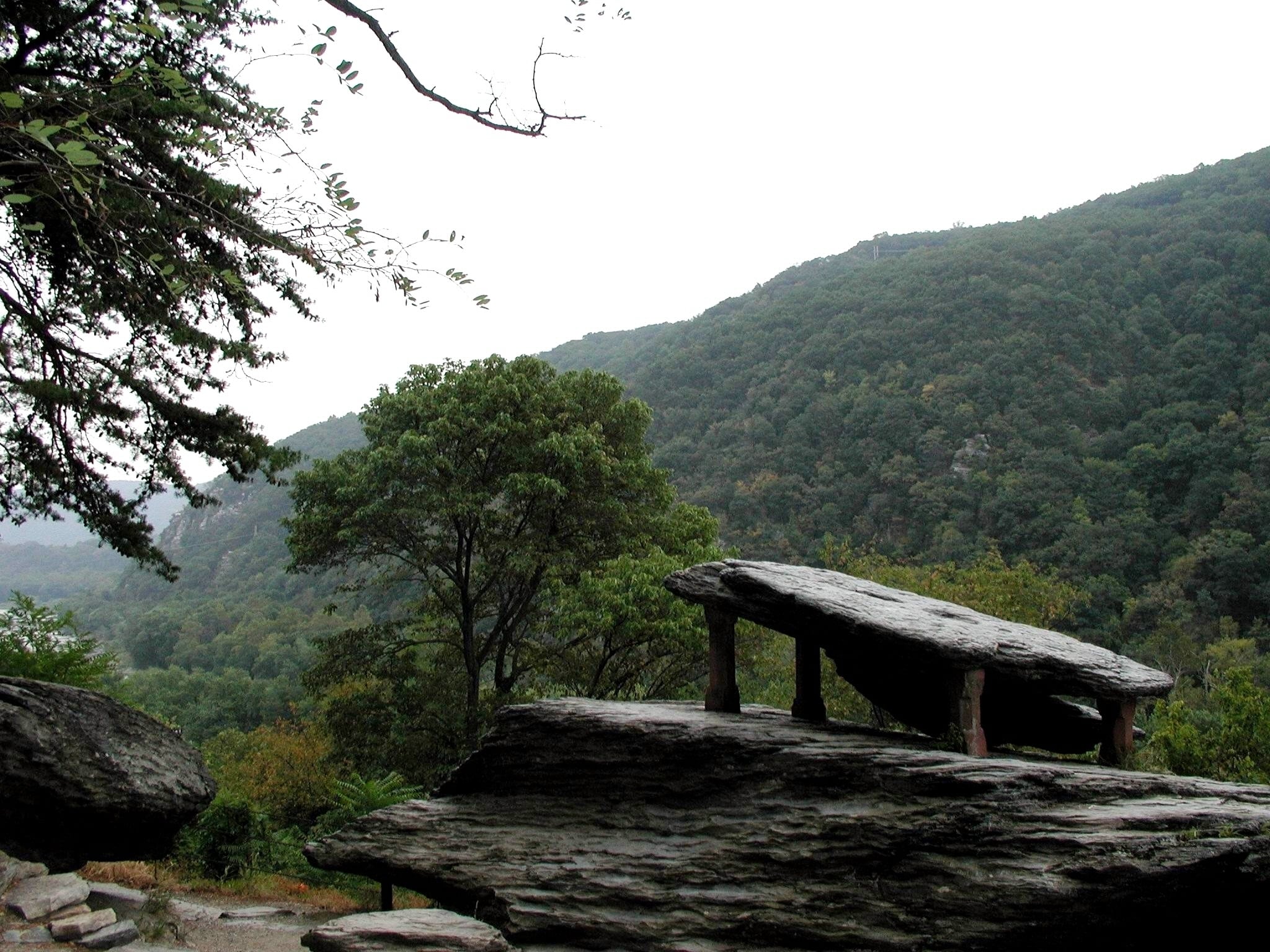
Check Out Our Harpers Ferry Film
Nestled in the heart of the Shenandoah Valley, Harpers Ferry National Historical Park is a must visit destination for anyone looking to explore America’s past in a picturesque natural setting.
From hiking the Appalachian Trail to exploring the historic town, Harpers Ferry offers an array of exciting opportunities for adventure seekers and history buffs alike.
Journey with More Than Just Parks as we explore an area rich with history, natural beauty, and opportunities to explore. This is Harpers Ferry. Filmed primarily in stunning UHD 8K.
7. Booker T. Washington National Monument
We’re on to the Top 7 Virginia Landmarks and its time to take a respite from the American Civil War. At #7 on our list is a place which honors a remarkable member of the African American community. It’s the Booker T. Washington National Monument.
Booker T Washington was the foremost black educator of the late nineteenth and early twentieth centuries. He was one of the most important figures in black public affairs during his time and emerged as an man who survived the horrors of slavery.
On April 5, 1856, Booker T. Washington began life as a slave on the 207-arce farm of James Burroughs. After the Civil War, Washington became founder and first principal of Tuskegee Normal and Industrial School. Later as an adviser, author and orator, his past would influence his philosophies as the most influential African American of his era.
He believed that education was the best means to lift up an oppressed people. Thousands of African-American graduates from The Tuskegee Institute have helped to realize his vision by contribution to the quality of American life.
You can begin your visit to the Booker T. Washington National Monument at the visitor center where you’ll discover exhibits and an audio-visual presentation to familiarize you with the life of Booker T. Washington. There is also a gift shop with books and related items focusing on African American history.
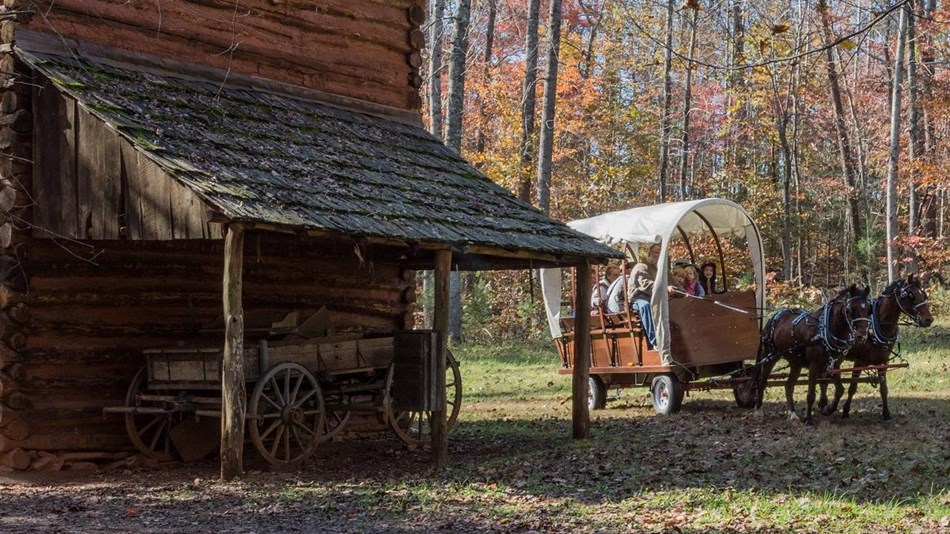
Things To Do
While you’re there, I recommend the following activities:
- The Plantation Trail: It’s a ¼ mile loop through the historic area. It passes by reconstructions of the nineteenth century farm buildings similar to those that stood on the Burroughs Plantation when Booker T. Washington lived here as a boy.
- Farm Area: Explore the farm area where sheep, pigs, horses and chickens provide the atmosphere for this recreated 1850’s tobacco farm.
- Garden Area: There you will learn about the gardening techniques used by owners and slaves on the farm. The garden is an example of a typical subsistence garden of piedmont Virginia of the 1850s.
I also recommend learning more about this remarkable man by reading UP FROM SLAVERY (Annotated): AN AUTOBIOGRAPHY by Booker T. Washington – an American Slave, his Life from slavery to freedom, Slavery in the South and the American Abolishment of Slavery.
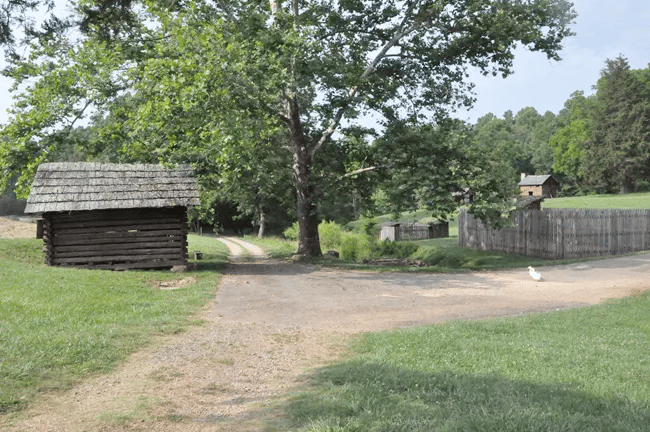
6. Manassas National Battlefield
If you don’t go looking for the Civil War in Virginia then it may come looking for you. So many amazing site! We’re on to the “Final Four.”
We’ve already reviewed the place where the war ended, but our next site, at #4, is the place where the first major battle of the American Civil War was fought. It’s Manassas National Battlefield.
On July 21, 1861, two armies clashed for the first time on the fields overlooking Bull Run.
The First Manassas or First Battle of Bull Run resulted in thousands of lives lost and is referred to as the first major land battle of the American Civil war.
The battle began when about 35,000 Union troops, led by General Irwin McDowell, marched from the federal capital in Washington, D.C. to strike a Confederate force of 20,000, led by General Pierre G.T. Beauregard, along a small river known as Bull Run.
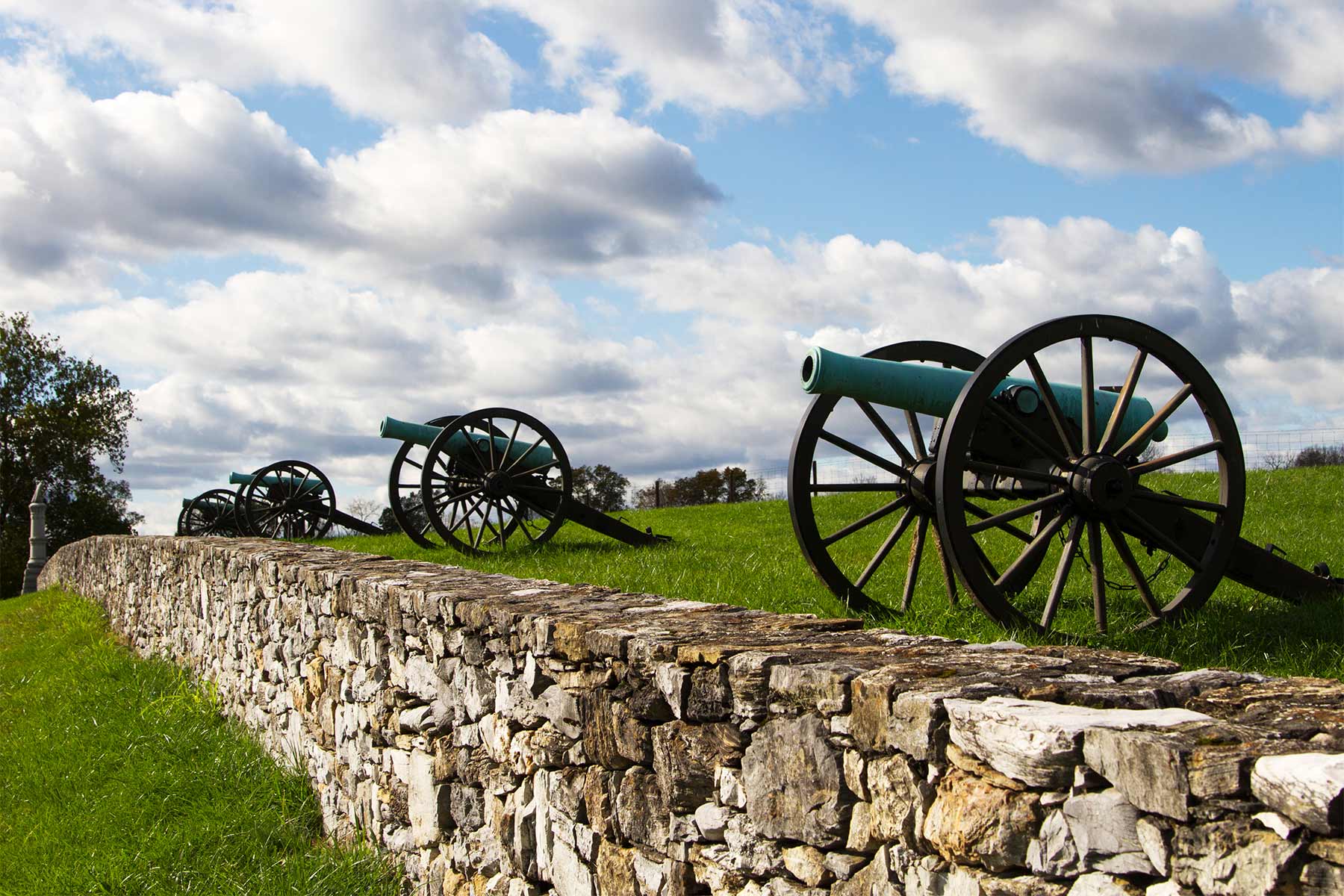
“There Stands Jackson Like A Stone Wall”
After fighting on the defensive for most of the day, the rebel forces under the leadership of General Thomas “Stonewall” Jackson rallied and were able to break the Union right flank, sending the Federals into a chaotic retreat towards Washington. Jackson managed to snatch victory from the jaws of defeat just when it appeared that all was lost for the Confederates.
The Confederate victory gave the South a surge of confidence and shocked many in the North, who realized the war would not be won as easily as they had hoped.
An excellent book on this important battle would be The First Battle of Manassas: An End to Innocence by John J. Hennessy.
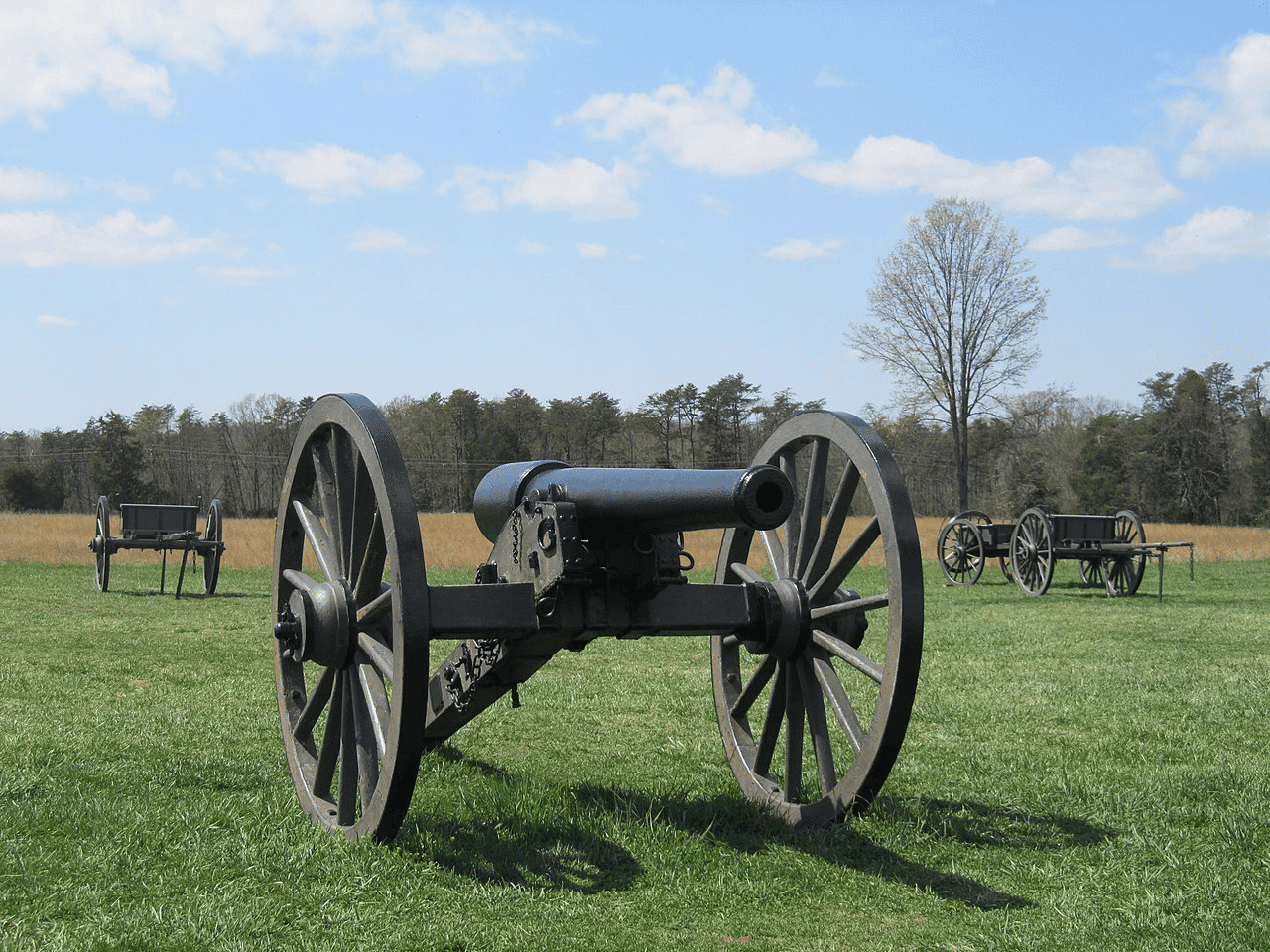
“There is Jackson standing like a stone wall! Let us determine to die here, and we will conquer!”
-Brigadier General Barnard E. Bee
Things To Do At Manassas
Some of the things to do at Manassas National Battlefield include:
- Explore the battlefield: The park offers numerous trails and walking paths that allow visitors to explore the battlefield and get a sense of the terrain and the scale of the battles that took place there.
- Take a guided tour: The park offers a variety of guided tours led by knowledgeable rangers and volunteers. These tours provide visitors with a more in-depth understanding of the battles and the events that took place on the battlefield.
- Visit the Henry Hill Visitor Center: The visitor center is a great starting point for any visit to the park. Here, visitors can watch an introductory film, view exhibits, and get information about the park and its history.
- Attend a special event: The park hosts a variety of special events throughout the year, including living history demonstrations, ranger-led talks, and commemorative ceremonies.
- Visit the Stone House: The Stone House is a historic building that served as a hospital during the first Battle of Manassas. Today, it is a museum that tells the story of the role that hospitals played during the Civil War.
- Picnic and enjoy the scenery: The park offers numerous picnic areas and scenic vistas where visitors can relax and take in the natural beauty of the surrounding landscape.
Top 5 Virginia Landmarks
5. Shenandoah National Park
Just because we’re More Than Just Parks doesn’t mean that we’ve forgotten about them. At #5 on our list of the Best Virginia Landmarks is Shenandoah National Park.
Just 75 miles from the bustle of Washington, D.C., you will find Shenandoah National Park. It’s a breathtaking place with cascading waterfalls, spectacular vistas, fields of wildflowers, and quiet wooded hollows.
The park features over 200,000 acres of protected lands that are haven to deer, songbirds, and black bear, there’s so much to explore.
If you’re feeling lazy then a great way to see the park is along Skyline Drive. The Skyline Drive runs 105 miles north and south along the crest of the Blue Ridge Mountains in Shenandoah National Park and is the only public road through the park.
It takes about three hours to travel the entire length of the Park on a clear day. Or you could take a mountain bike or a road bike along Skyline Drive and on all paved areas in Shenandoah National Park.
If you’re looking for more of a challenge Shenandoah National Park has 196,000+ acres of backcountry and wilderness and over 500 miles of trails to explore. For a rugged adventure there’s backcountry camping.
By its very nature it’s a primitive experience that allows you to immerse yourself in the beauty and challenge of this natural wonderland.
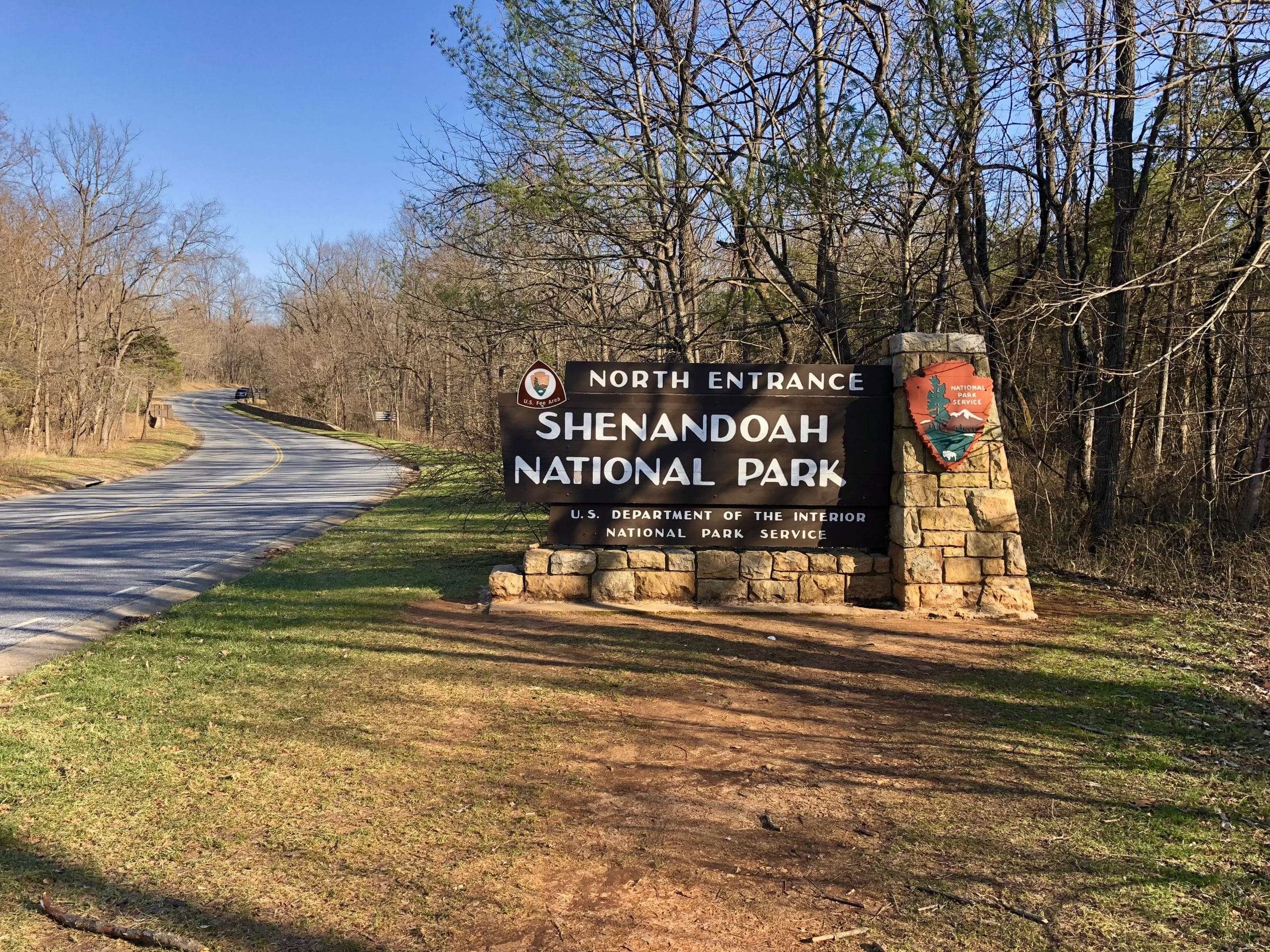
Don’t Forget Your Fishing Pole And Your Camera
There’s also 500 of hiking trails to choose from. Or you might want to bring a fishing pole along as the park contains over 90 mountain streams and their minor tributaries. Over 70 of those streams contain fish, and most of those 70 contain native brook trout.
And don’t forget to bring your camera as you’ll want to photograph the incredible wildlife you’ll see during the day and the brilliant night sky you’ll experience after the sun goes down.
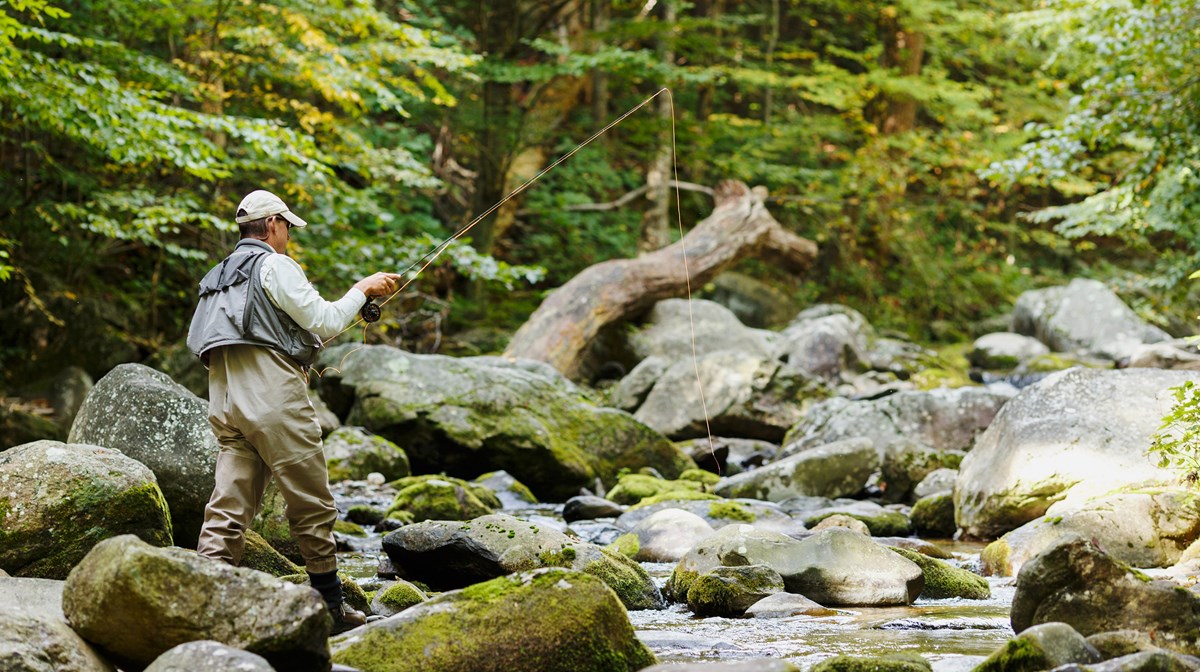
CHECK OUT: 12 SURPRISING Facts About Shenandoah National Park
4. Mount Vernon
Next up on our list of the Best Virginia Landmarks is the home of the Father of our Country. At #4 on our list is Mount Vernon which was the home of George Washington, the first President of the United States, and his wife, Martha Washington.
The history of Mount Vernon dates back to the mid-18th century, when George Washington first acquired the property.
He originally acquired the Mount Vernon estate in 1754, but it wasn’t until the 1760s that he began construction on the iconic mansion. Over the years, Washington made a number of additions and improvements to the property, including a new east wing and the construction of the iconic piazza, which provided stunning views of the Potomac River.
Mount Vernon served as Washington’s primary residence for much of his adult life, and it was here that he entertained guests, managed his vast agricultural and business interests, and oversaw the construction of the new nation’s capital city, Washington, D.C.
The plantation was also home to hundreds of enslaved people, who worked on the property’s farms and plantations.

Mount Vernon Following Washington’s Death
Following Washington’s death in 1799, Mount Vernon was passed down to his family, and it remained in the family’s hands until the mid-19th century.
In 1858, the Mount Vernon Ladies’ Association was founded with the goal of preserving the historic property and opening it to the public. Today, Mount Vernon is a popular tourist destination, with guided tours of the mansion, the outbuildings, and the grounds, as well as exhibits and educational programs related to Washington’s life and legacy.
Mount Vernon is also a National Historic Landmark and a UNESCO World Heritage Site. It is considered one of the most important and iconic sites of American history, and it continues to serve as a powerful reminder of the life and legacy of one of the nation’s most important and influential founding fathers.
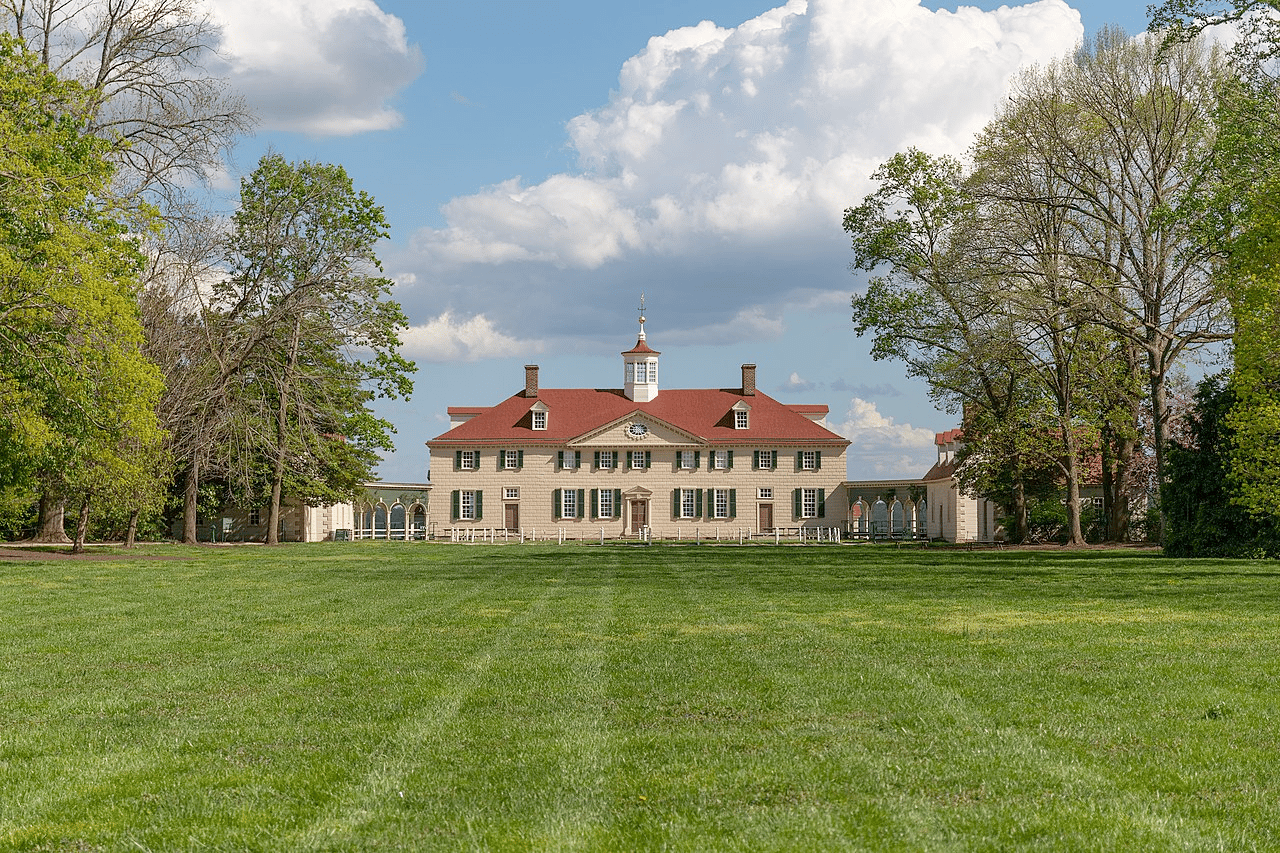
CHECK OUT: 10 BEST Revolutionary War Sites In America
3. Arlington National Cemetery
Our next Virginia landmark has been described as the most famous cemetery in the country. It’s the final resting place for many of our nation’s greatest heroes, including more than 300,000 veterans of every American conflict, from the Revolutionary War to Iraq and Afghanistan.
At #3 on our list of the Best Virginia Landmarks is Arlington National Cemetery.
The cemetery is the final resting place for over 400,000 service members, veterans, and their families, as well as a number of notable Americans.
The history of Arlington National Cemetery dates back to 1864, during the Civil War. The property was originally owned by General Robert E. Lee, the commander of the Confederate Army, but was seized by the Union Army and used as a military camp and burial ground.
The first military burial at the site took place on May 13, 1864, and over the next few years, thousands of Union soldiers who died in battle were interred at the site.
In 1882, the cemetery was designated as a national cemetery and renamed Arlington National Cemetery. Over the years, the cemetery has expanded to include a number of notable memorials and monuments, including the Tomb of the Unknown Soldier, the Memorial Amphitheater, and the Arlington House, which served as the home of Robert E. Lee before the Civil War.

The Site Of Important Events
Arlington National Cemetery has been the site of a number of important events throughout American history, including state funerals for presidents and other notable figures, wreath-laying ceremonies on Memorial Day and Veterans Day, and other important national observances.
The cemetery also continues to serve as an active military cemetery, with service members from all branches of the military buried on the grounds.
Today, Arlington National Cemetery is one of the most visited and respected military cemeteries in the world. It serves as a powerful reminder of the sacrifice and service of the men and women who have served in the United States Armed Forces, and it remains a solemn and sacred place of remembrance and reflection for all who visit.
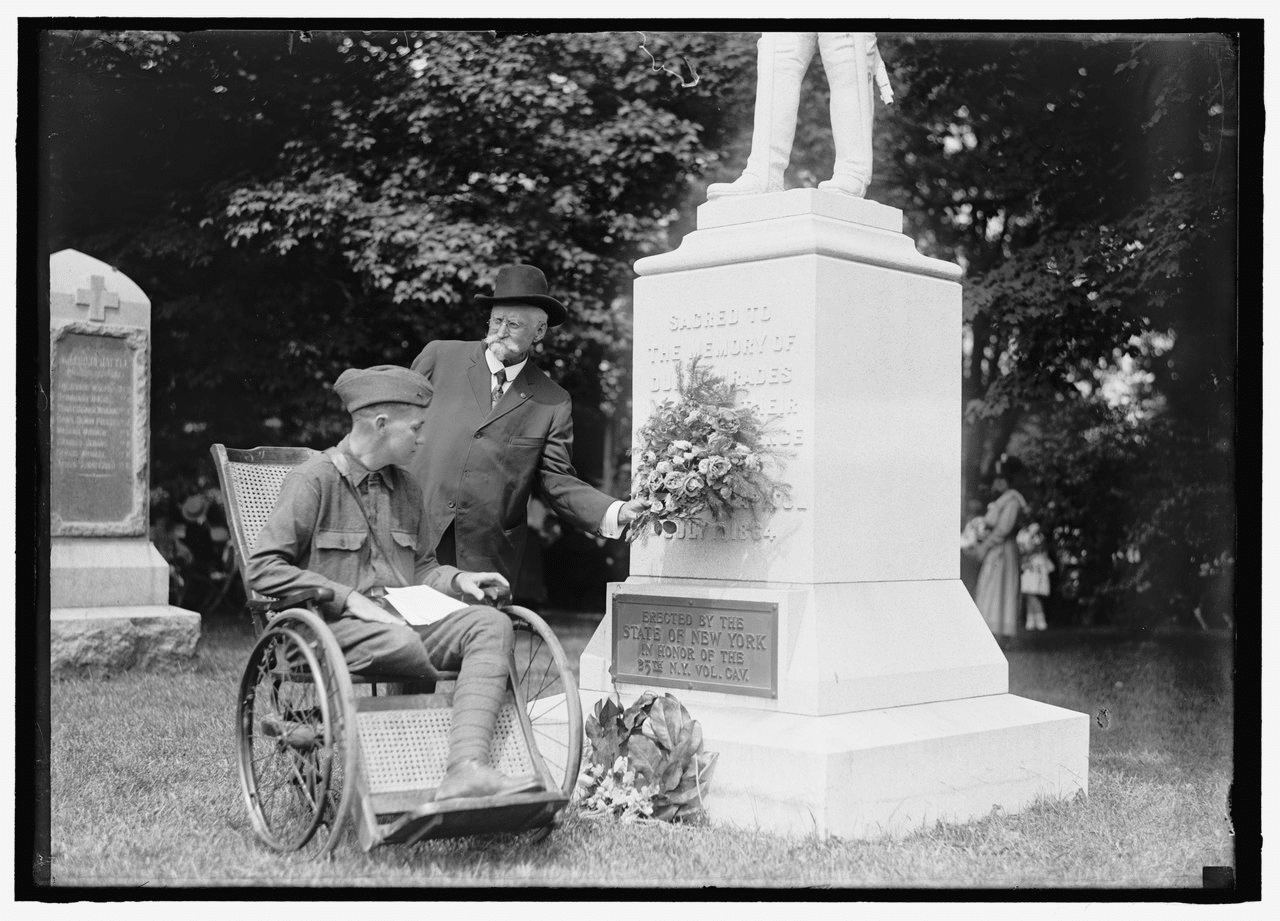
Things To Do At Arlington
Here are some things you can do while visiting:
- Visit the gravesites of notable figures: Arlington National Cemetery is the final resting place of many notable figures, including Presidents John F. Kennedy and William Howard Taft, Supreme Court Justice Thurgood Marshall, and astronaut Neil Armstrong.
- Attend the Changing of the Guard ceremony at the Tomb of the Unknown Soldier: This solemn ceremony takes place every hour on the hour from April 1 to September 30 and every two hours from October 1 to March 31.
- Visit the Arlington House: This historic mansion was once the home of Robert E. Lee and his family. Today, it serves as a museum dedicated to the history of Arlington National Cemetery and the Lee family.
- Take a guided tour: The cemetery offers a variety of guided tours, including walking tours, bus tours, and private tours. These tours offer visitors the opportunity to learn more about the cemetery’s history and the stories of the people buried there.
- Witness wreath-laying ceremonies: Throughout the year, various organizations lay wreaths at the gravesites of fallen soldiers. These ceremonies are open to the public and provide a powerful reminder of the sacrifices made by our nation’s servicemen and women.
- Visit the Memorial Amphitheater: This iconic structure is the site of many important ceremonies and events, including the annual Memorial Day and Veterans Day ceremonies.
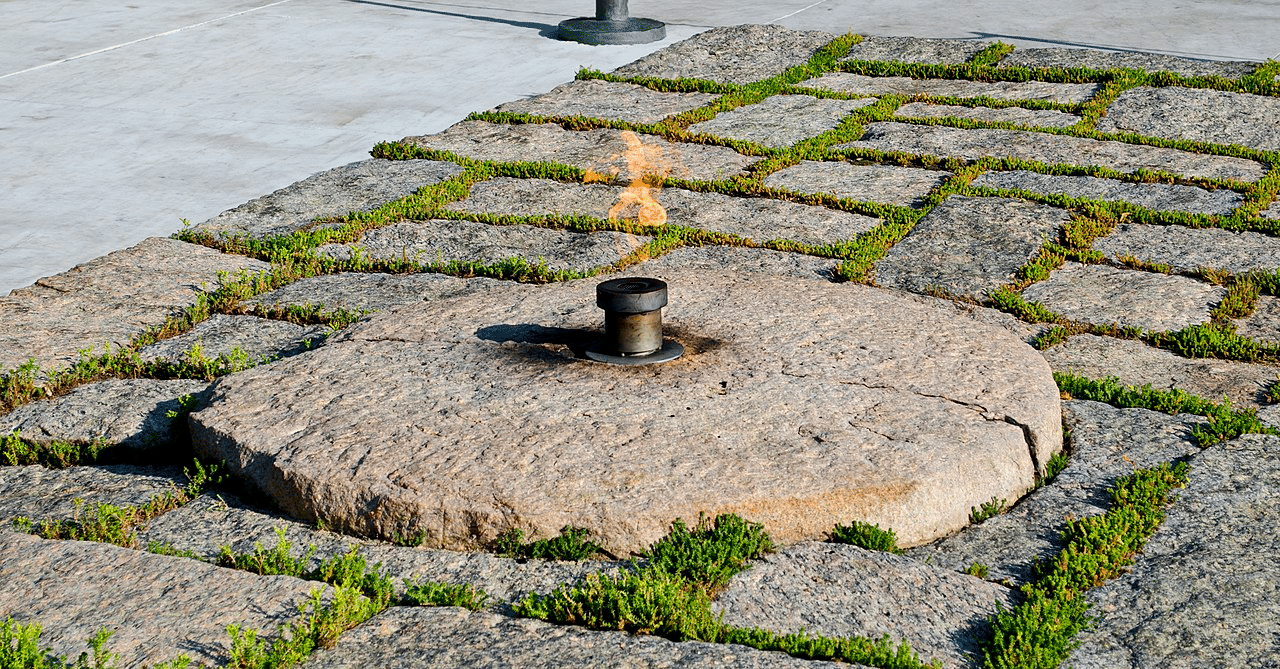
2. Colonial Williamsburg
We’re on to our final 2 Virginia landmarks. In the runner-up spot at #2 is a place which was one of America’s first planned cities.
Laid out in 1699 under the supervision of Governor Francis Nicholson, it was to be a “new and well-ordered city” suitable for the capital of the largest and most populous of the British colonies in America.
Welcome to Colonial Williamsburg.

Colonial Williamsburg | Courtesy of Wikimedia Commons
A Short History Of Colonial Williamsburg
In the early 17th century, English settlers arrived in the Virginia Colony and established Jamestown as the first permanent English settlement in North America in 1607. Over time, the colony expanded, and in 1699, the capital of the colony was moved from Jamestown to Middle Plantation, which was later renamed Williamsburg. The decision to relocate the capital was made due to concerns about the swampy and unhealthy conditions of Jamestown.
Williamsburg quickly grew into a prosperous and influential city, serving as the political, economic, and cultural center of the Virginia Colony. It was home to the College of William & Mary, the second oldest institution of higher education in the United States, founded in 1693.
During the 18th century, Williamsburg became an epicenter of political activity and played a significant role in the lead-up to the American Revolution. In 1774, the city hosted the First Virginia Convention, where patriots debated and adopted resolutions against British policies. The following year, the Second Virginia Convention met in Williamsburg and passed a resolution to raise and equip troops in defense of the colony.
The Revolutionary War had a profound impact on Williamsburg. As the British advanced toward the city in 1781, the colonial government fled, and the city was occupied by British forces. The Battle of Yorktown, fought just a few miles away, ultimately led to the British surrender and marked a turning point in the war. After the war, Virginia’s capital was moved to Richmond, and Williamsburg’s significance declined.

Farmer at Colonial Williamsburg | Courtesy of Wikimedia Commons
Williamsburg In The 20th Century
In the early 20th century, a movement began to restore and preserve the historic buildings of Williamsburg. John D. Rockefeller Jr., a wealthy philanthropist, became involved in the restoration efforts and provided significant financial support. The Colonial Williamsburg Foundation was established in 1926 to oversee the project.
The restoration of Colonial Williamsburg aimed to recreate the city as it appeared in the late 18th century. Many buildings were reconstructed, and others were carefully restored to their original appearance. Skilled artisans and historical interpreters were employed to recreate the daily life and activities of the colonial era, providing visitors with an immersive experience.
Today, Colonial Williamsburg spans over 300 acres and features more than 500 restored or reconstructed buildings. It serves as both an educational institution and a popular tourist destination, attracting millions of visitors each year. The living history museum offers a glimpse into colonial life, showcasing the political, social, and cultural aspects of the time.

Tourists visiting Colonial Williamsburg | Courtesy of Wikimedia Commons
1. Fredericksburg & Spotsylvania National Military Park
Drum roll please! More Than Just Parks #1 Virginia Landmark is a place connected to the American Civil War.
Given the integral role which the state played in the conflict, how could it be otherwise? This is no ordinary site however. It’s actually four sites rolled into one. It’s Fredericksburg & Spotsylvania National Military Park.
There’s no single location which encompasses more important battles of the American Civil War than the Fredericksburg & Spotsylvania National Military Park.
Four battles, Chancellorsville, Fredericksburg, Spotsylvania and the Wilderness were all fought there.
So many books have been written and so much history has been taught about these four battles and their impact on America’s bloodiest conflict.

Map of Fredericksburg and Spotsylvania National Military Park | Courtesy of NPS
Fredericksburg
The Battle of Fredericksburg was one of the largest and deadliest battles of the Civil War with almost 20,000 casualties on both sides.
It featured the first opposed river crossing in American military history as well as the Civil War’s first instance of urban combat. It ended in a victory for the Confederacy.
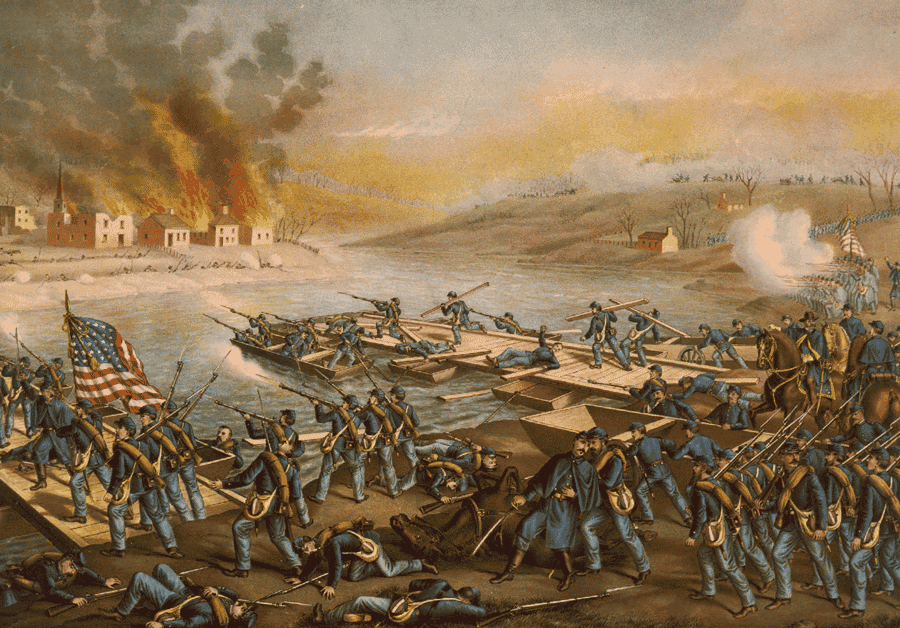
Chancellorsville
The Battle of Chancellorsville (April 30-May 6, 1863) was also a huge victory for the Confederacy and General Robert E. Lee.
It was considered to be Lee’s greatest victory as a much larger Union force failed to encircle and destroy the Confederate Army of Northern Virginia.
The South, however, did lose the services of one of its most brilliant generals as Thomas “Stonewall” Jackson was mistakenly killed by his own soldiers while returning from a reconnaissance mission.
Grant Takes Command
The bloody Battle of the Wilderness, in which no side could claim victory, marked the first stage of a major Union offensive toward the Confederate capital of Richmond.
This was the first battle in which Union Commander Ulysses S. Grant faced off against Confederate Commander Robert E. Lee.
It was part of Grant’s “Overland Campaign,” which was a relentless drive to finally defeat Robert E. Lee’s Army of Northern Virginia and capture the South’s capital at Richmond, Virginia.

The Battle That Became A Siege
The last of these four battles fought on the ground which is today Fredericksburg & Spotsylvania National Military Park was the Battle of Spotsylvania.
This battle was fought after Grant brilliantly repositioned his forces. Robert E. Lee, however, guessing Grant’s intention was to outflank him, take Petersburg, and then march on to Richmond, rushed forces there to check Grant’s move.
And so it began in May of 1864. A battle which pitted 100,000 Union troops against 52,000 Confederates.
The fiercest fighting occurred in pouring rain on May 12. For 23 hours straight the two sides fought hand-to-hand in a field near fortifications known as the Mule Shoe, and afterward as the Bloody Angle.
After being repulsed again and again, Grant relied on his “essential arithmetic.”
He had his men prepare for a siege. Lee understood then that it was only a matter of time before he would have to withdraw which would likely mean the end for the Confederacy.
CHECK OUT: 10 BEST Civil War Sites In America
Things To See & Do
The Fredericksburg & Spotsylvania National Military Park combines natural beauty with historical significance. At each of the aforementioned battlefields, there are excellent hiking trails.
There’s also an audio tour which is available through the National Park Service app. It features historical points of interest including:
- The Sunken Road: This is where wave after wave of Union soldiers marched towards the Confederate lines, but none made it closer than 50 yards. Confederate troops behind the stone wall and atop Marye’s Heights held the high ground with their well-defended line thereby inflicting high casualties on the attacking force.
- Chatham Manor: Originally established as a slave plantation, Chatham embodies the main cause of the Civil War: the desire of white Southerners to maintain and protect the institution of slavery and the resulting material wealth that slavery produced for them.
- Lee’s Hill: Also known as Telegraph Hill, this is where Confederate General Robert E. Lee made his headquarters in anticipation of battle.
- Howison Hill: It was named for the Howison family that lived nearby. It was an artillery position during the battle of Fredericksburg.
- Union Breakthrough: This is where Union General George Gordon Meade’s 4,500-man division broke through the Confederate line they surprised unprepared South Carolinians. Soon the Confederates rallied, and without reinforcements nearby, Meade’s men could not hold their position against Confederate General Stonewall Jackson’s 38,000-man corps.
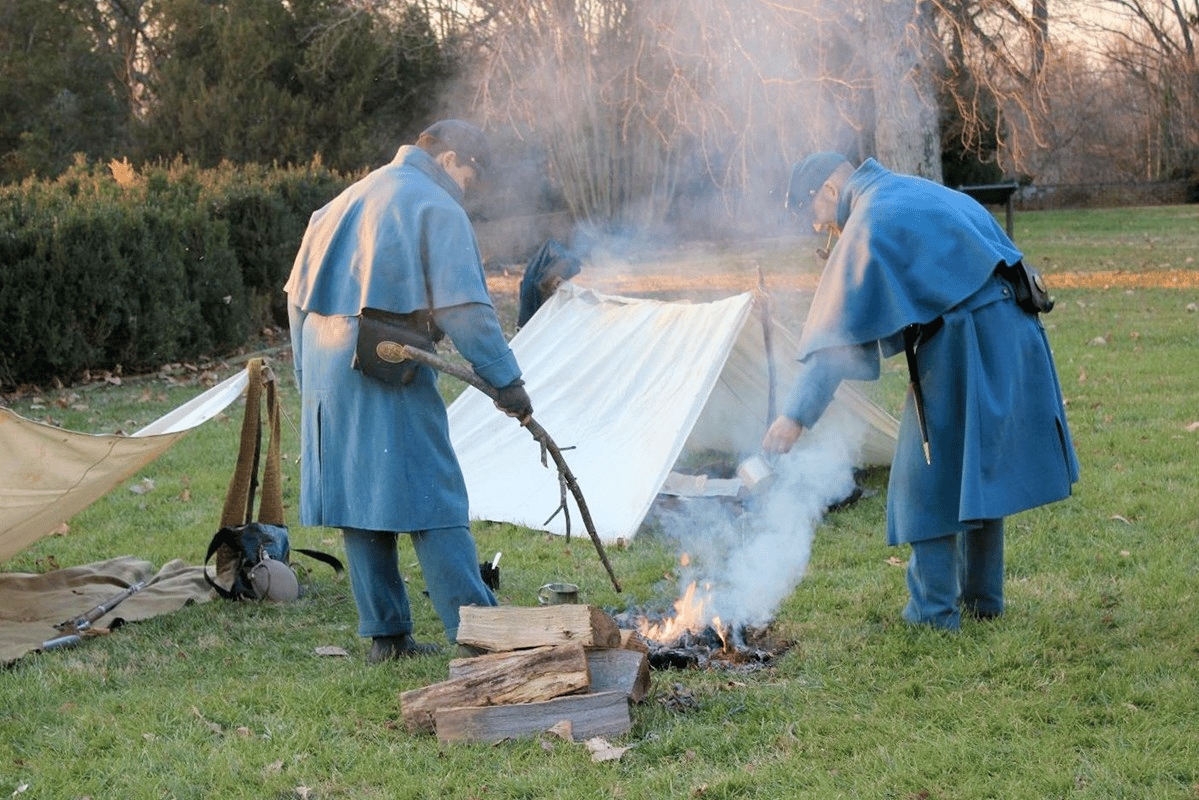
If you’re interested in learning what other amazing places Virginia has to offer then check out: 30 EPIC Virginia National Parks Worth Visiting.
Map Of Virginia Landmarks
List Of Virginia Landmarks
- Fredericksburg & Spotsylvania National Military Park
- Colonial Williamsburg
- Arlington National Cemetery
- Mount Vernon
- Shenandoah National Park
- Manassas National Battlefield
- Booker T. Washington National Monument
- Harpers Ferry National Historical Park
- Petersburg National Battlefield
- Appomattox Court House
- Monticello
- Fort Monroe National Monument
- Richmond National Battlefield Park
- George Washington Birthplace National Monument
- Virginia Museum of Fine Arts
- Edgar Allen Poe Museum
- Jamestown Settlement
- Blue Ridge Mountains
- Chrysler Museum Of Art
- Luray Caverns
Why Trust Us About Virginia Landmarks?
We’re Jim Pattiz and Will Pattiz, collectively known as the Pattiz Brothers and we absolutely LOVE the national parks.
You should probably know that we don’t just make this stuff up out of thin air. We’ve spent our entire adult lives exploring and filming America’s national parks and public lands.
We’ve worked with the National Park Service, the Department of Interior, USDA, U.S. Forest Service, and more for years creating films on important places and issues. Our work has been featured in leading publications all over the world and even some people outside of our immediate family call us experts on the national parks.
And, in 2018, our father – having spent a lifetime teaching history – joined us so that he could help us to tell the stories behind these amazing places.
Meet The Parks Brothers
We Hope You’ll Follow Our Journey

Our goal here at More Than Just Parks is to share the beauty of America’s national parks and public lands through stunning short films in an effort to get Americans and the world to see the true value in land conservation.
We hope you’ll follow our journey through the parks and help us to keep them the incredible places that they are. If you’re interested in joining the adventure then sign up below!

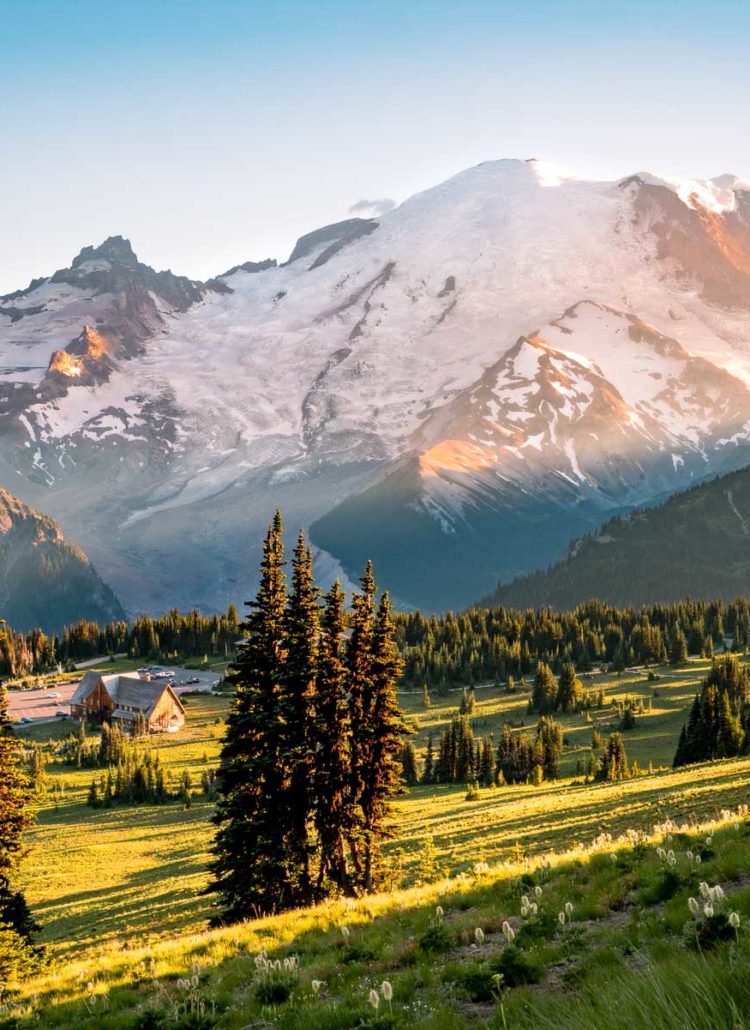
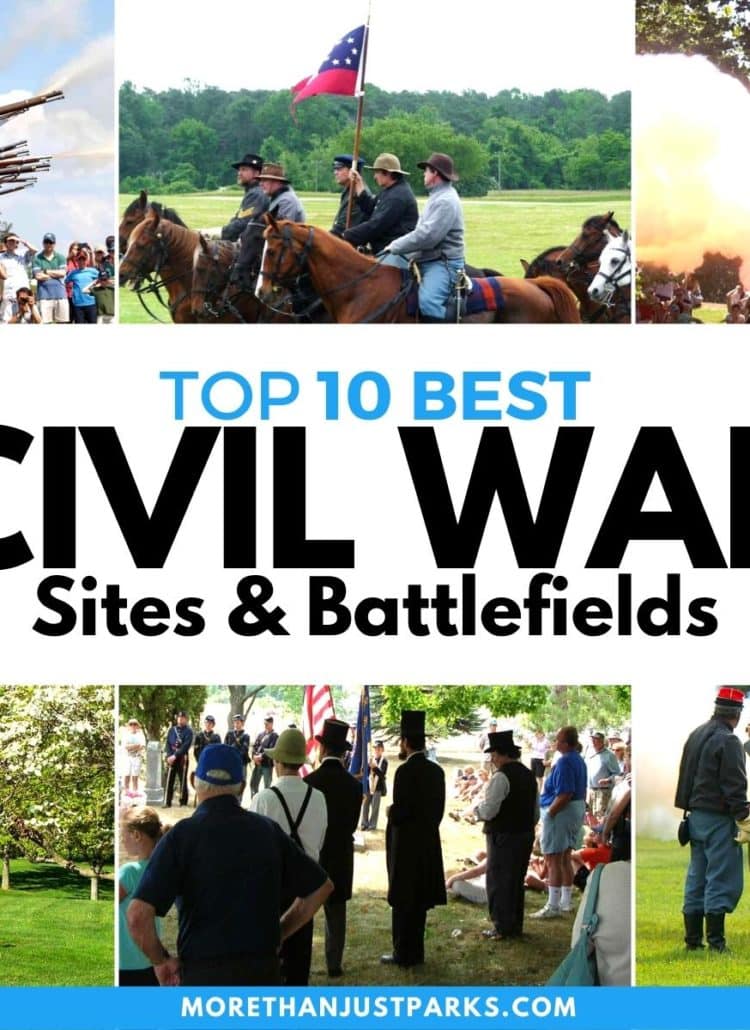


Leave a Reply